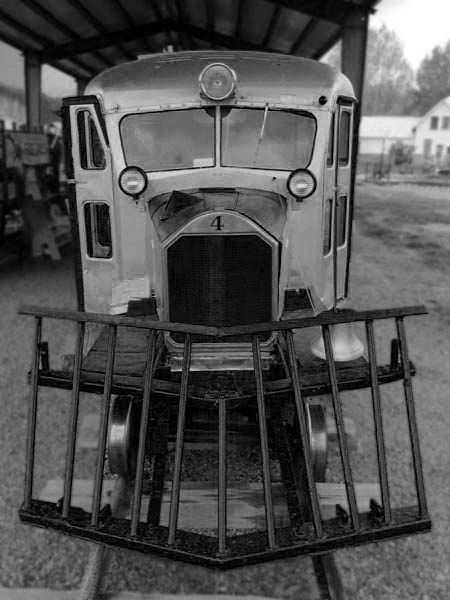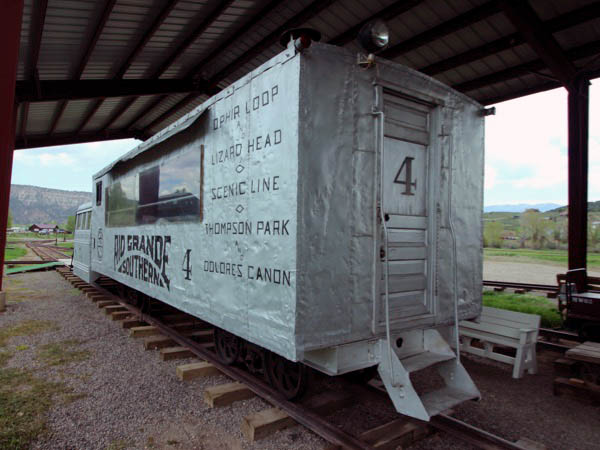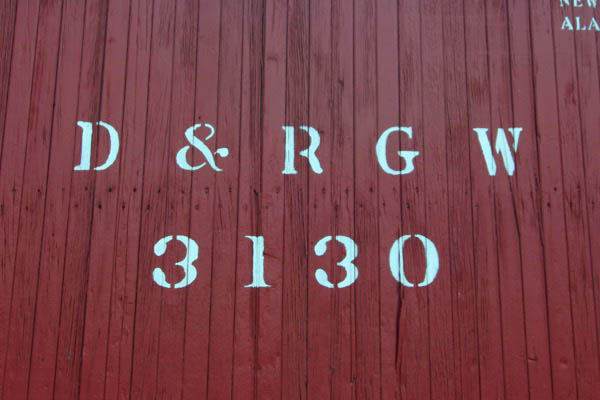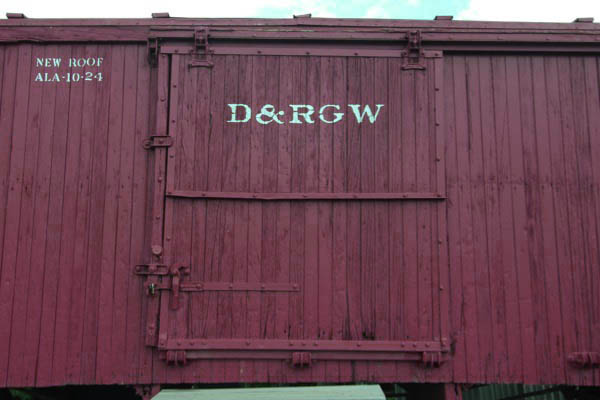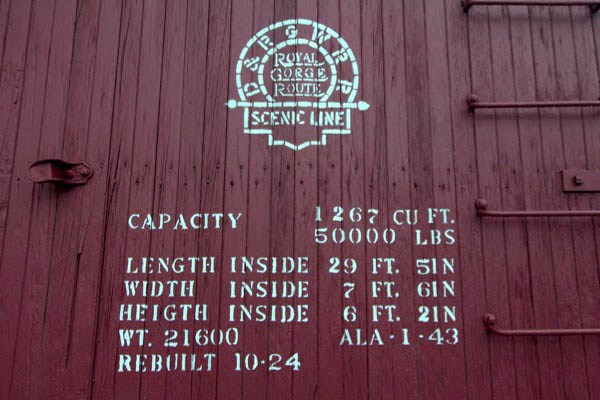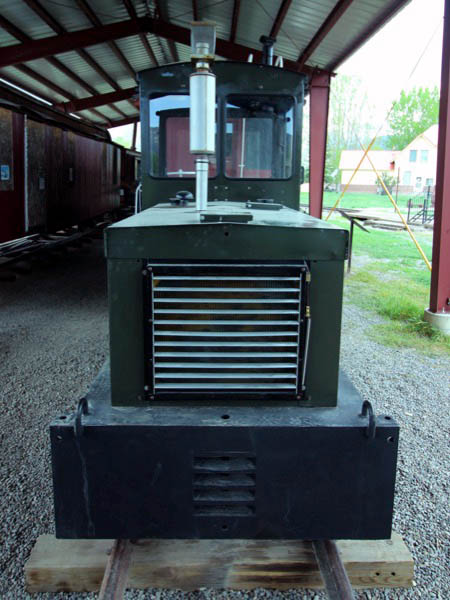
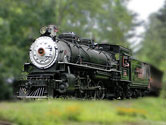






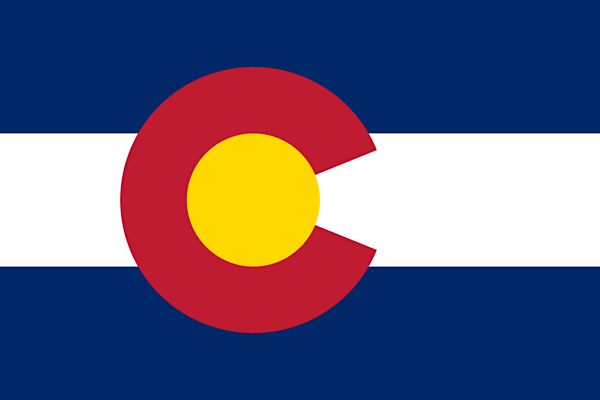


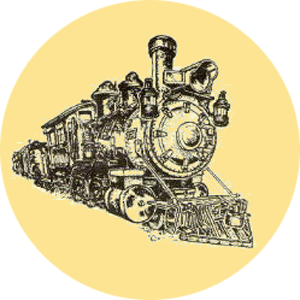 |
Ridgway Railroad MuseumBirthplace of the Rio Grande Southern Railroad |
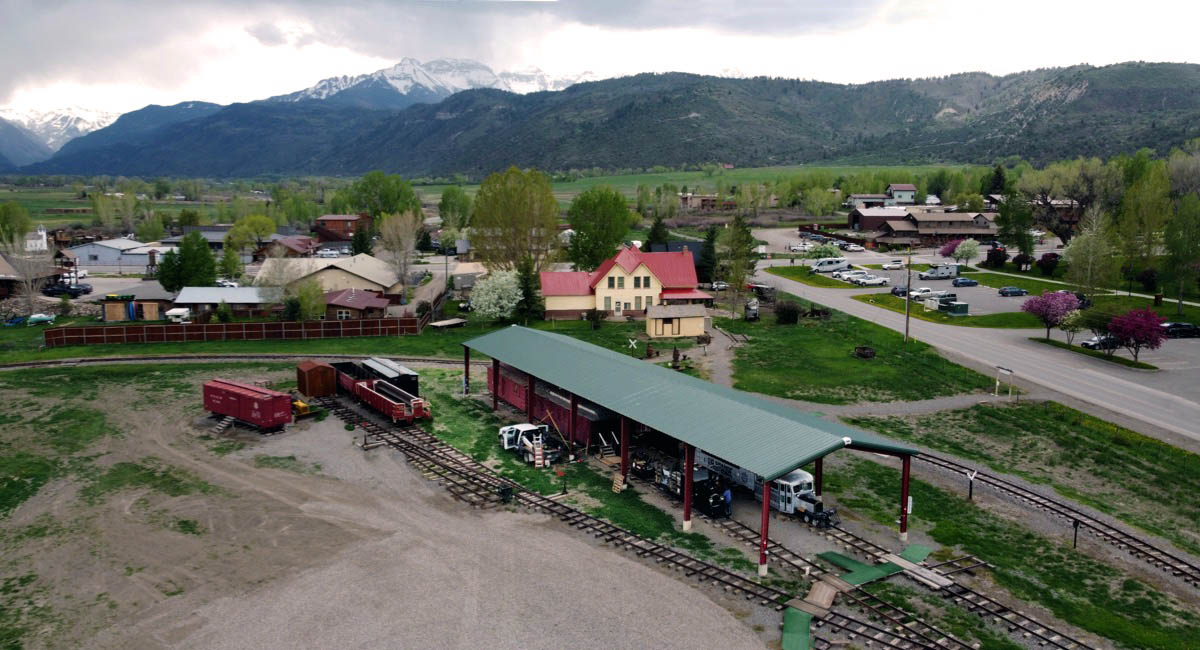
Ridgway, Co / May 2023 / RWH


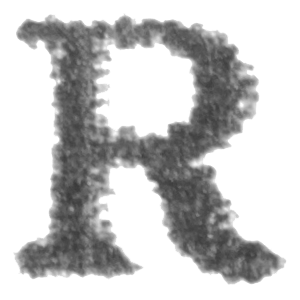 idgway, Colorado, long known as the birthplace of the Rio Grande Southern Railroad, is the home of a museum dedicated to the preservation of the history of railroading in Ouray County and surrounding areas. The Ridgway Railroad Museum is a non-profit, member supported organization whose mission is to explain and interpret the role and significance of railroads in the history of this region by use of exhibits, a reference library, educational programs, publications and sharing information with historical and modeling groups.
idgway, Colorado, long known as the birthplace of the Rio Grande Southern Railroad, is the home of a museum dedicated to the preservation of the history of railroading in Ouray County and surrounding areas. The Ridgway Railroad Museum is a non-profit, member supported organization whose mission is to explain and interpret the role and significance of railroads in the history of this region by use of exhibits, a reference library, educational programs, publications and sharing information with historical and modeling groups.

 ocated in the beautiful San Juan mountains of southwest Colorado, the Ridgway Railroad Museum preserves the history of venerable Rio Grande Southern Railroad. Developed in 1889 as an alternative 36" narrow gauge route around the sharp mountains of the region, the RGS struggled to stay in operation until 1953 and was famous for its steam passenger trains, Galloping Goose railcars, and extraordinary scenery along its 161 mile route from Ridgway to Durango via Lizard Head Pass. The "Southern" was headquartered in Ridgway and maintained shops and a depot in town, just blocks from the current museum site on North Railroad Street. The museum has developed a loop of narrow gauge track for operating its preserved equipment. Primary in the collection is Rio Grande Southern "Goose" #4, which was displayed in Telluride, Colorado, for decades but is now maintained and operated by the museum. Other rolling stock includes passenger cars, freight cars, and a caboose. A metal shed has been erected to protect much of the collection from the elements.
ocated in the beautiful San Juan mountains of southwest Colorado, the Ridgway Railroad Museum preserves the history of venerable Rio Grande Southern Railroad. Developed in 1889 as an alternative 36" narrow gauge route around the sharp mountains of the region, the RGS struggled to stay in operation until 1953 and was famous for its steam passenger trains, Galloping Goose railcars, and extraordinary scenery along its 161 mile route from Ridgway to Durango via Lizard Head Pass. The "Southern" was headquartered in Ridgway and maintained shops and a depot in town, just blocks from the current museum site on North Railroad Street. The museum has developed a loop of narrow gauge track for operating its preserved equipment. Primary in the collection is Rio Grande Southern "Goose" #4, which was displayed in Telluride, Colorado, for decades but is now maintained and operated by the museum. Other rolling stock includes passenger cars, freight cars, and a caboose. A metal shed has been erected to protect much of the collection from the elements.

See also these related scrapbooks:
- Rio Grande Southern Railroad in Shortlines
- Colorado Railroad Museum in Preservation
- Galloping Goose Historical Society in Preservation
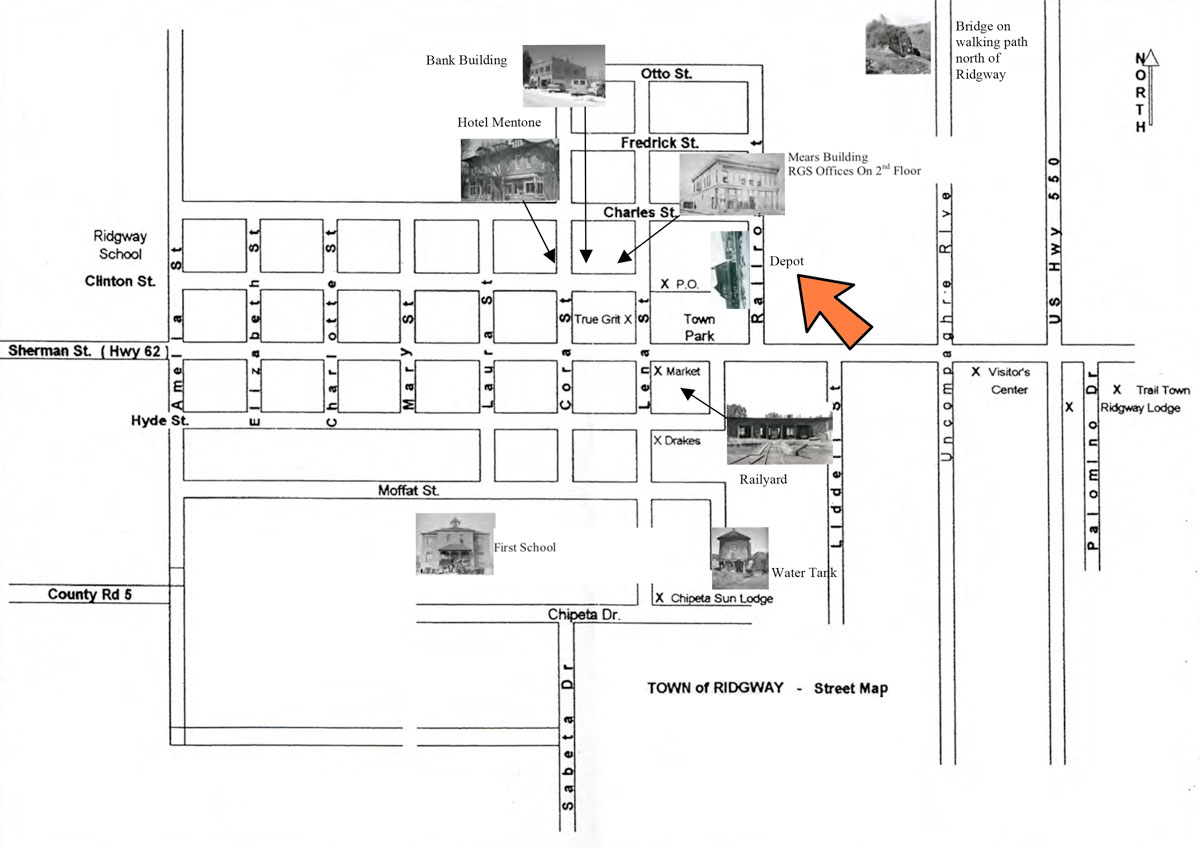
adapted from Ridgway Railroad Museum map / collection
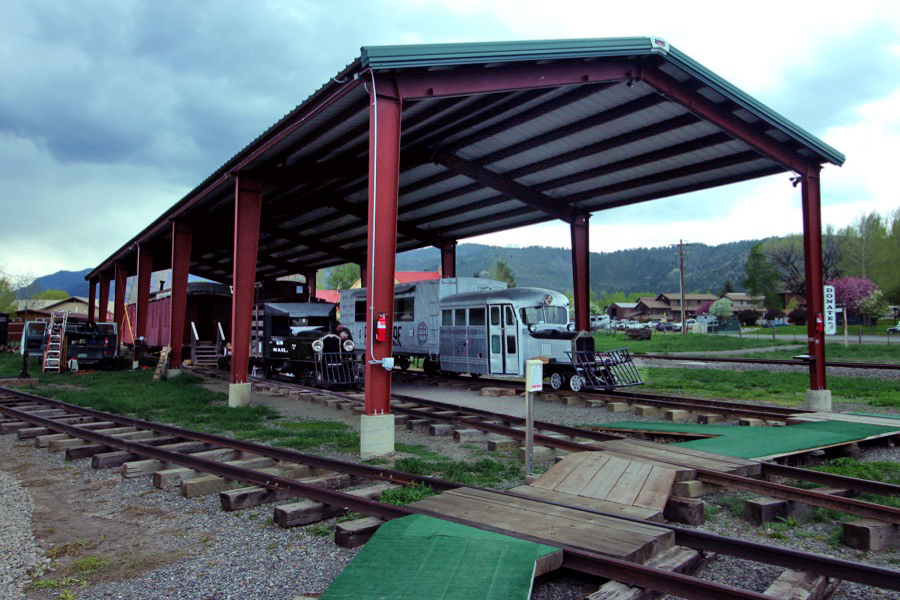
Ridgway, Co / May 2023 / RWH

Click to see the Ridgway Railroad Museum plotted on a Google Maps page
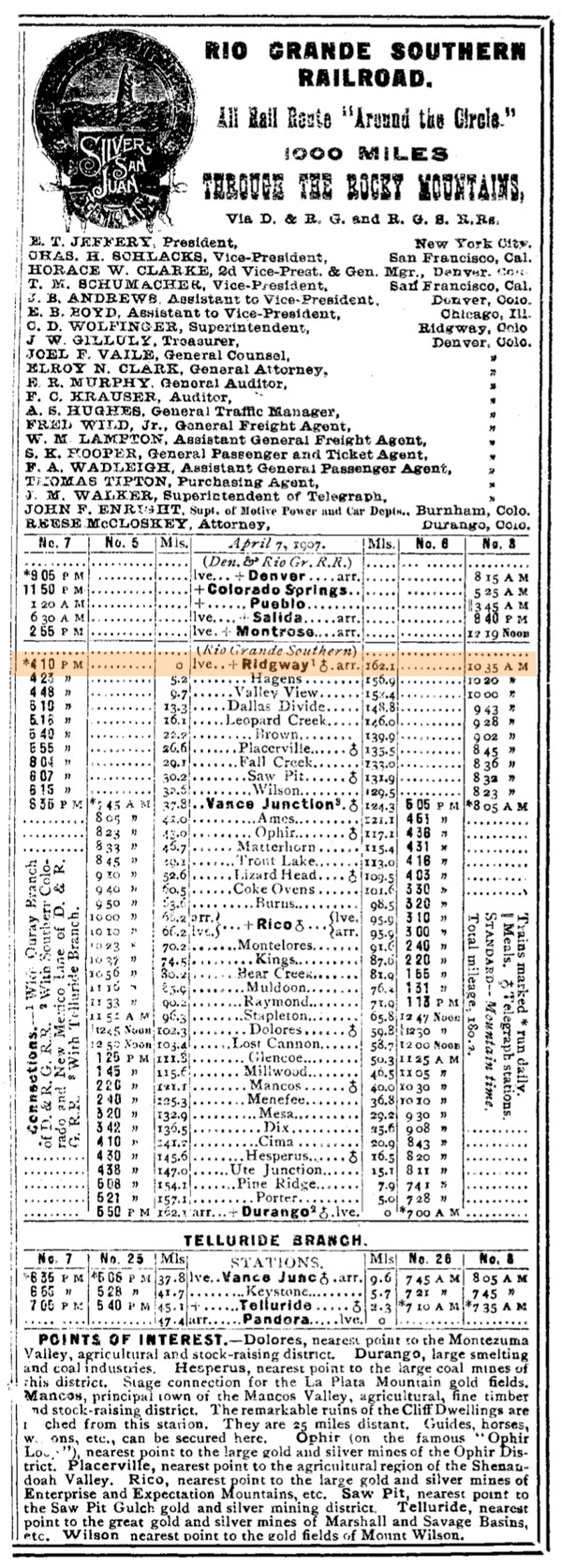
1907 Official Guide ad / collection

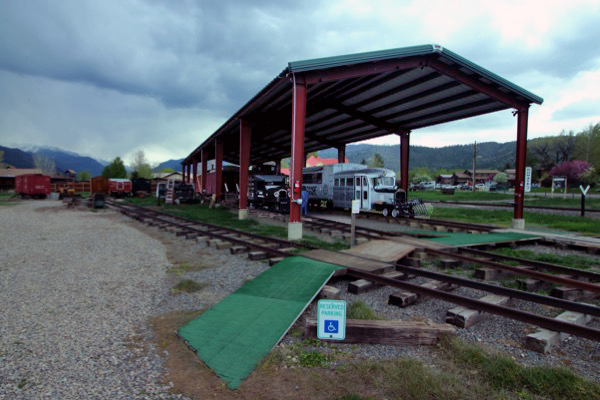
Ridgway, Co / May 2023 / RWH
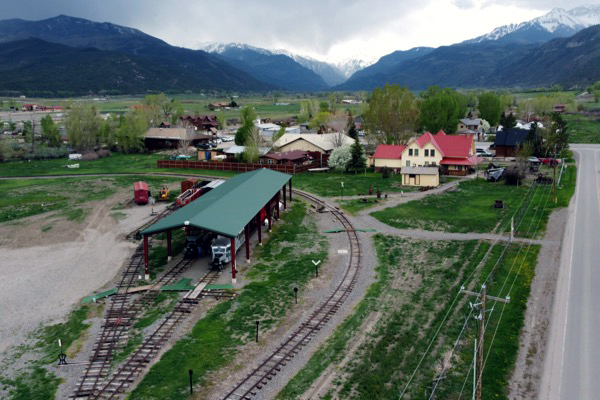
Ridgway, Co / May 2023 / RWH
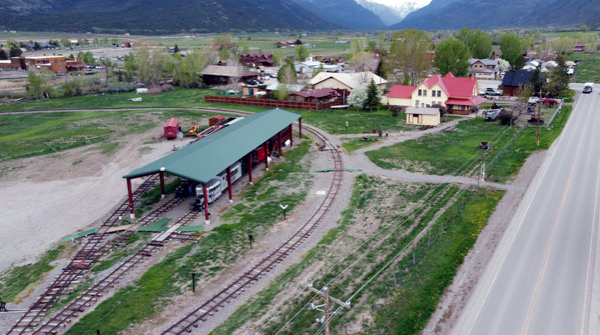
Ridgway, Co / May 2023 / RWH
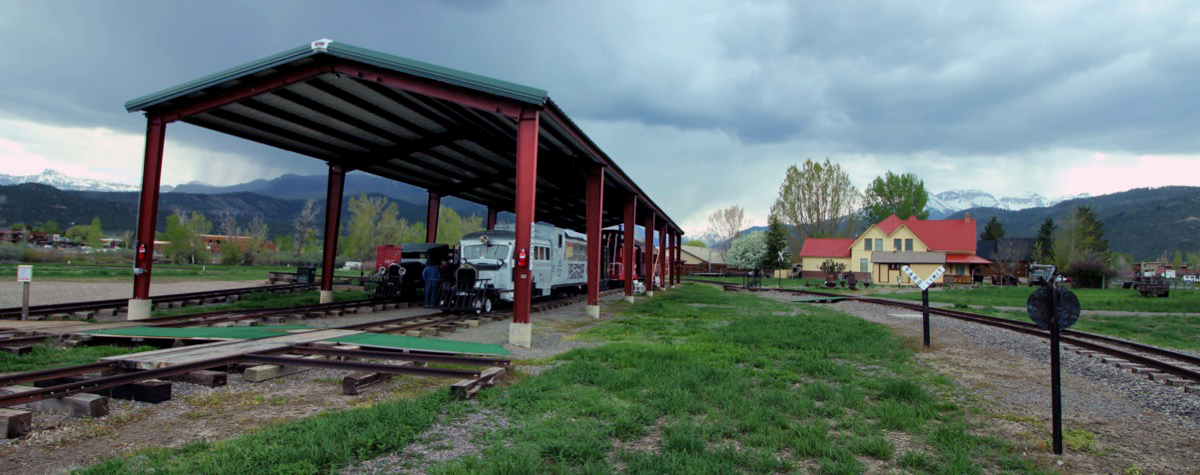
Ridgway, Co / May 2023 / RWH
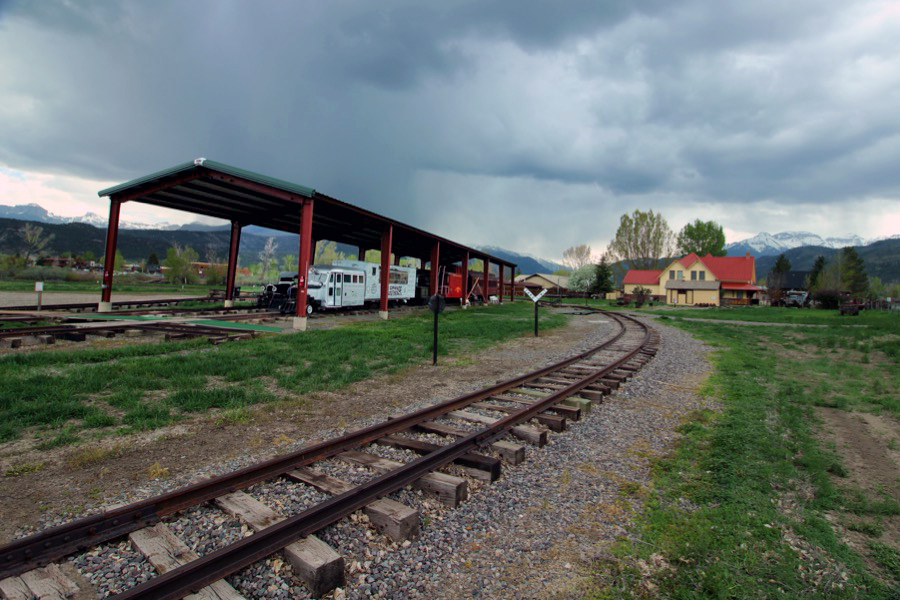
Ridgway, Co / May 2023 / RWH
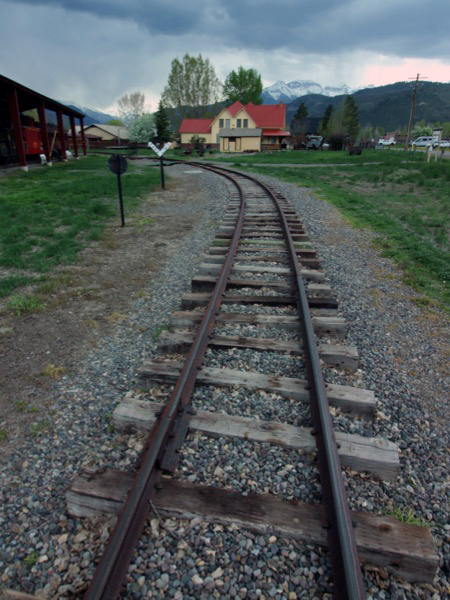
May 2023 / RWH
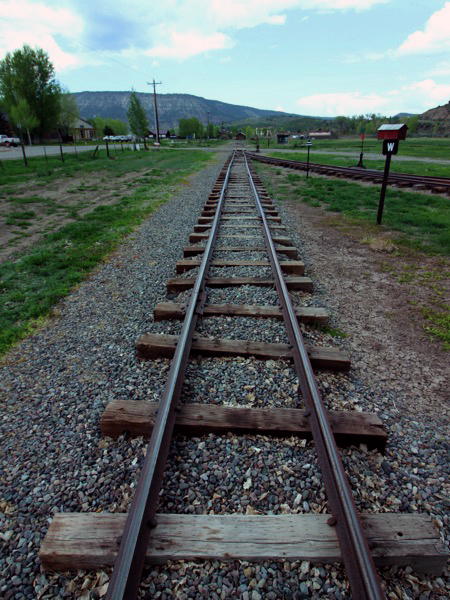
May 2023 / RWH
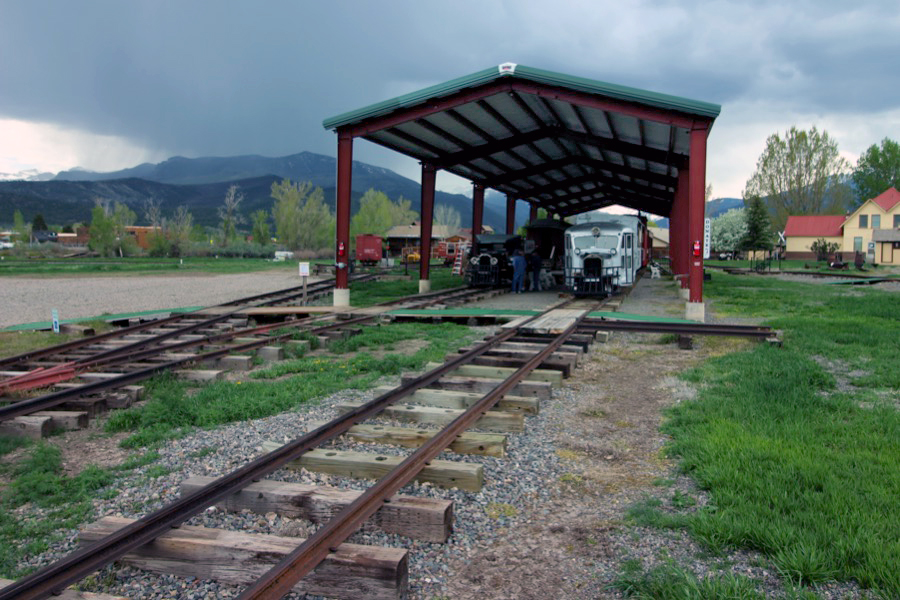
Ridgway, Co / May 2023 / RWH
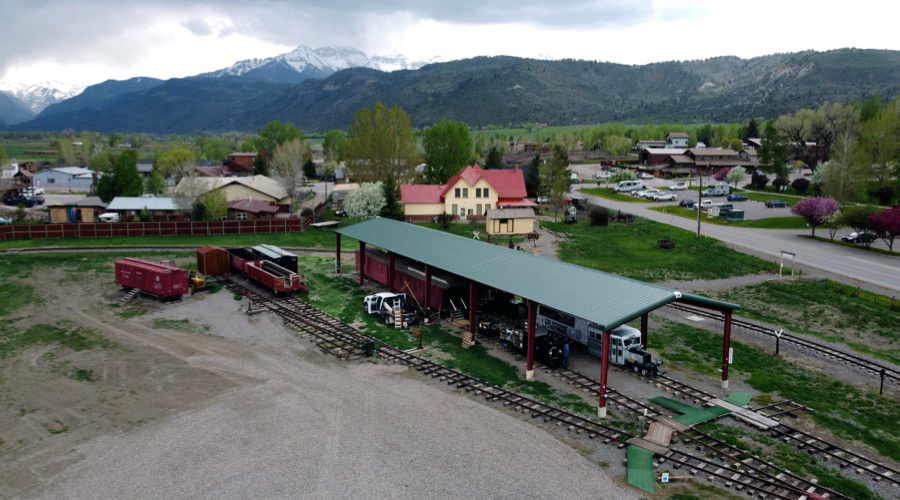
Ridgway, Co / May 2023 / RWH
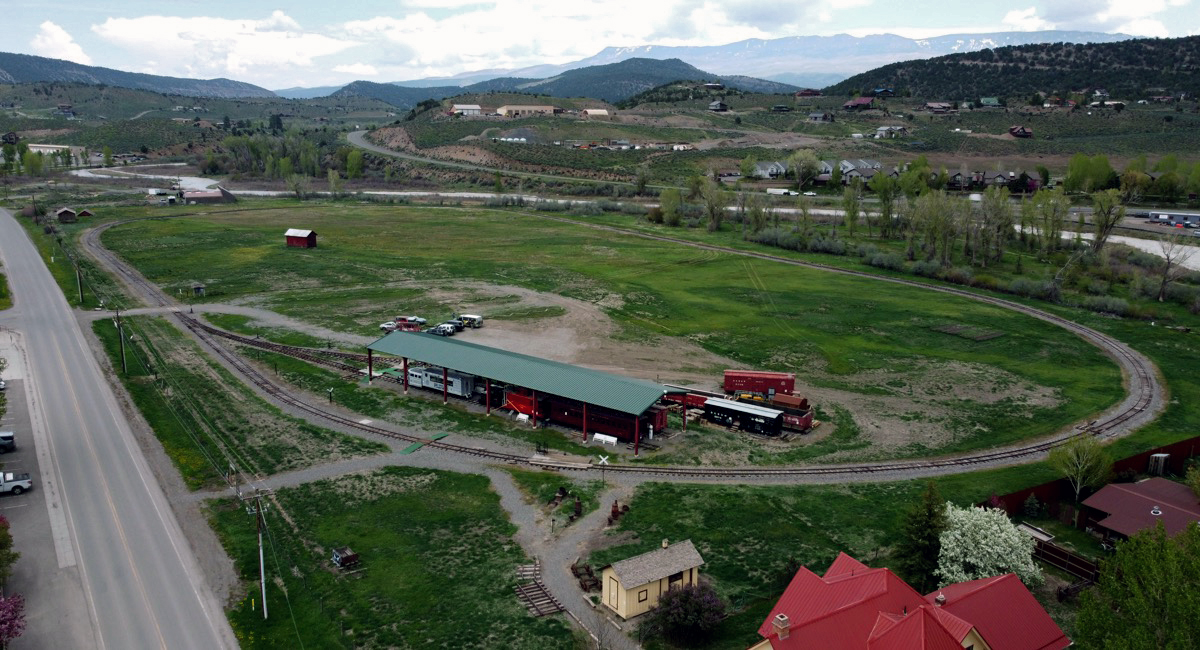
Ridgway, Co / May 2023 / RWH

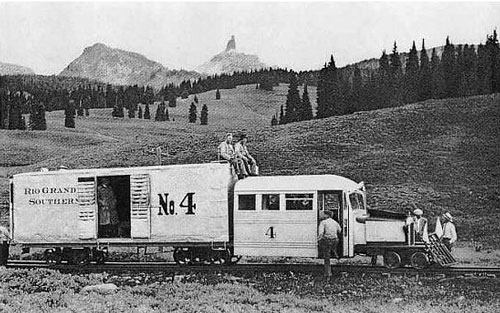
 idgway was where the Rio Grande Southern began its journey up and over Dallas Divide to service the mining communities of Telluride, Ophir, and Rico and on to Durango, providing a link to two sections of the Denver & Rio Grande. Ridgway serviced the engines in its roundhouse and provided the offices to conduct everyday business. It is appropriate that the Ridgway Railroad Museum should also now house some of the historical information that documents the rise and fall of the Rio Grande Southern. In a short eleven years, the Museum has developed a proven track record (no pun intended) that shows that not only does it value railroad preservation, but it capably contributes to it as well.
Ridgway was the starting point of Otto Mear's dream. A Ridgway Railroad Museum was the forethought of Bob Richardson when he left those first boxes for safekeeping. As part of Western Slope history, Ridgway will always be the home of the Rio Grande Southern Railroad. In partnership with the Colorado Railroad Museum, it will also maintain both of those visions for future generations.
idgway was where the Rio Grande Southern began its journey up and over Dallas Divide to service the mining communities of Telluride, Ophir, and Rico and on to Durango, providing a link to two sections of the Denver & Rio Grande. Ridgway serviced the engines in its roundhouse and provided the offices to conduct everyday business. It is appropriate that the Ridgway Railroad Museum should also now house some of the historical information that documents the rise and fall of the Rio Grande Southern. In a short eleven years, the Museum has developed a proven track record (no pun intended) that shows that not only does it value railroad preservation, but it capably contributes to it as well.
Ridgway was the starting point of Otto Mear's dream. A Ridgway Railroad Museum was the forethought of Bob Richardson when he left those first boxes for safekeeping. As part of Western Slope history, Ridgway will always be the home of the Rio Grande Southern Railroad. In partnership with the Colorado Railroad Museum, it will also maintain both of those visions for future generations.
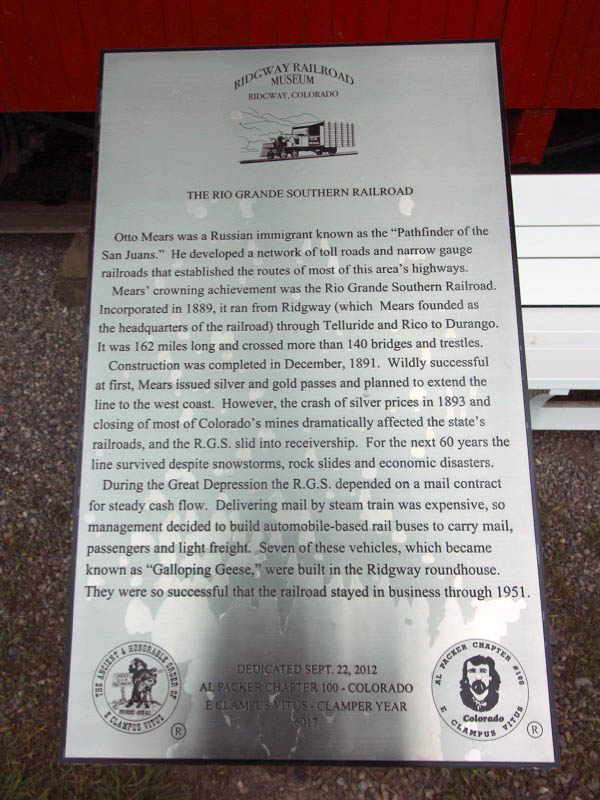
May 2023 / RWH
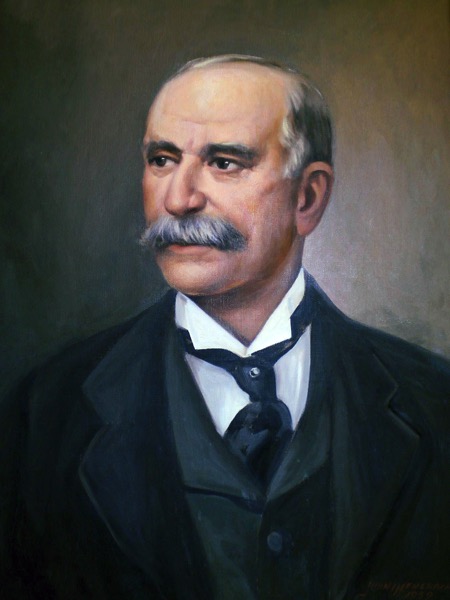
Otto Mears
web

 Ridgway Depot
Ridgway Depot
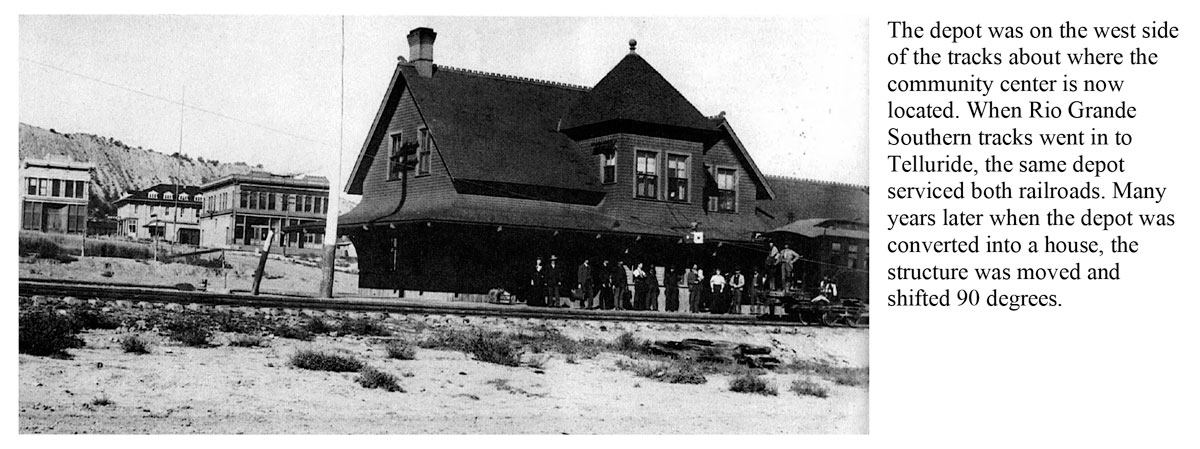
Ridgway Railroad Museum / collection
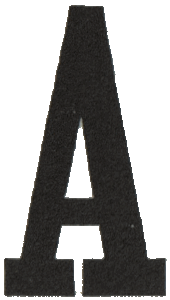 djacent to the Ridgway Railroad Museum but not affiliated, the former Rio Grande Southern depot has been relocated and renovated and today houses the Ouray County Ranch History Museum. After the RGS ended operations, the building was converted into a house, relocated across the present highway, and rotated 90 degrees from its original orientation to the railroad.
djacent to the Ridgway Railroad Museum but not affiliated, the former Rio Grande Southern depot has been relocated and renovated and today houses the Ouray County Ranch History Museum. After the RGS ended operations, the building was converted into a house, relocated across the present highway, and rotated 90 degrees from its original orientation to the railroad.

Ridgway, Co / Jun 1959 / JCH
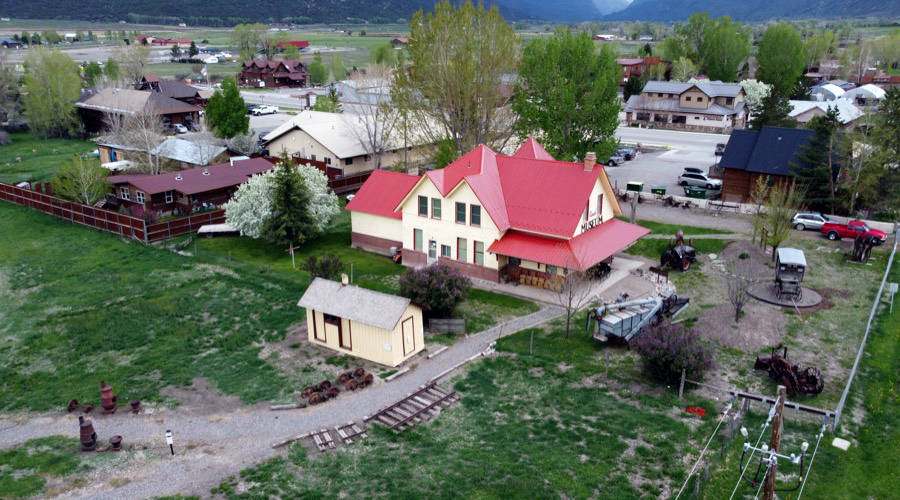
Ridgway, Co / May 2023 / RWH
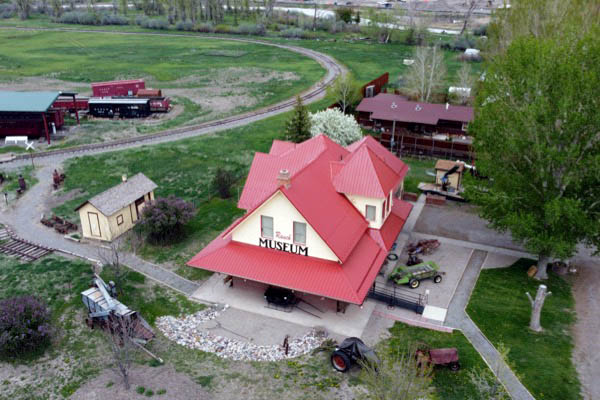
Ridgway, Co / May 2023 / RWH

Ridgway, Co / May 2023 / RWH


 he museum's mission is to preserve and share Ouray County ranching history and heritage, including stories of the area's early settlers from mid-1800s to today. Through education, historical exhibits, and ranch-oriented events and programs, OCRHM strives to increase awareness and appreciation of Ouray County's past and present rural lifestyles and cultural heritage while helping to facilitate open land conservation.
he museum's mission is to preserve and share Ouray County ranching history and heritage, including stories of the area's early settlers from mid-1800s to today. Through education, historical exhibits, and ranch-oriented events and programs, OCRHM strives to increase awareness and appreciation of Ouray County's past and present rural lifestyles and cultural heritage while helping to facilitate open land conservation.
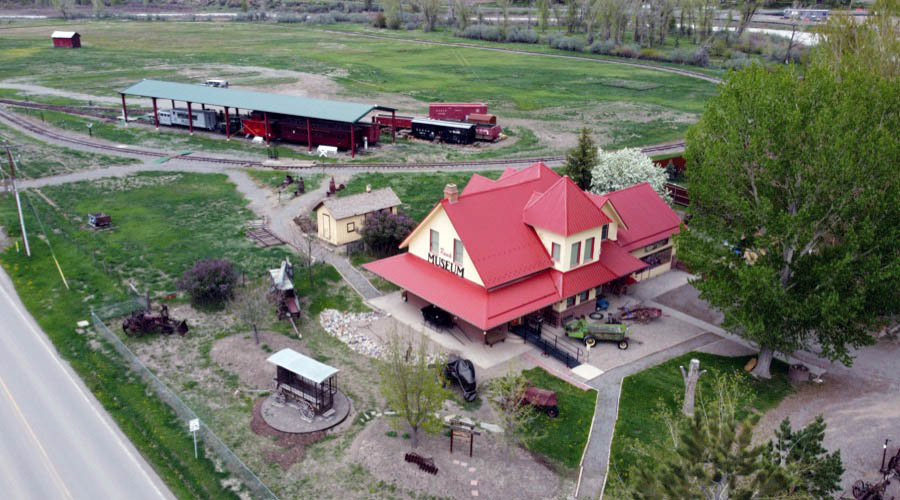
Ridgway, Co / May 2023 / RWH
Goose #4
Rio Grande Southern #4
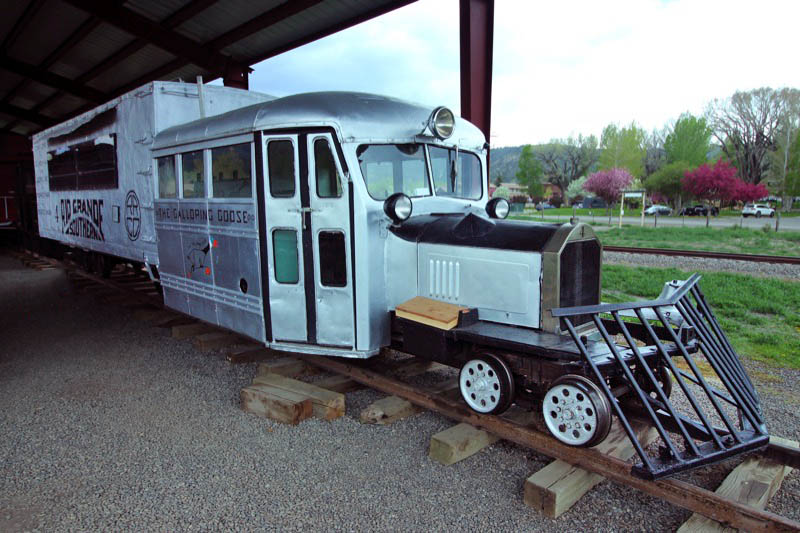
Rio Grande Southern #4
Ridgway, Co / May 2023 / RWH


Rio Grande Southern #4
rebuilt to bus body, 1946
to City of Telluride CO display
to Ridgway Railroad Museum
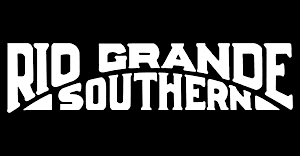
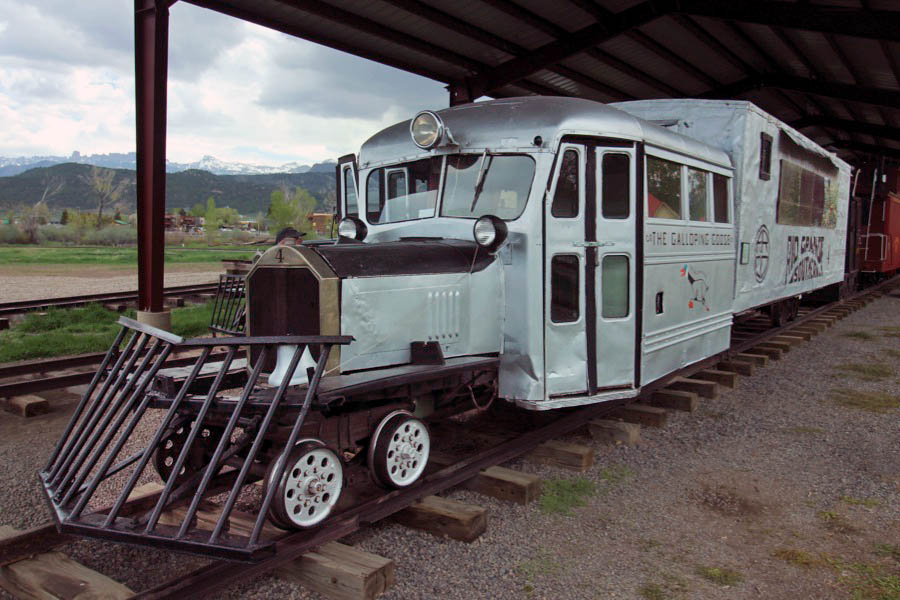
Ridgway, Co / May 2023 / RWH
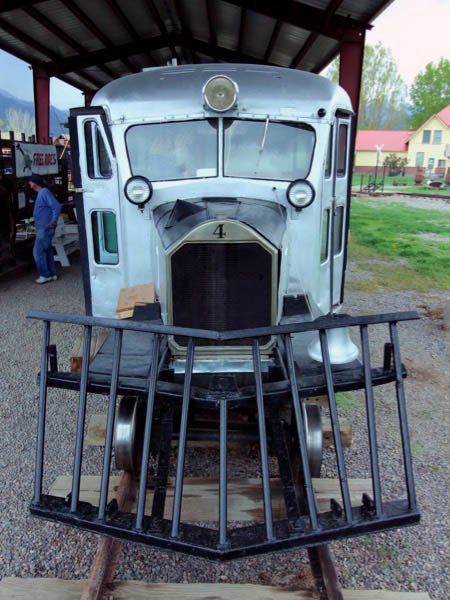
Jul 2023 / RWH
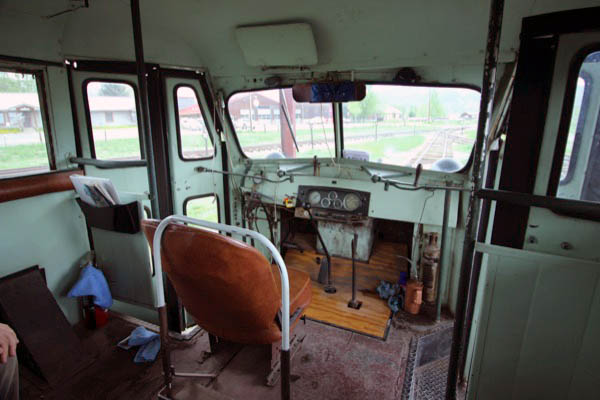
Jul 2023 / RWH
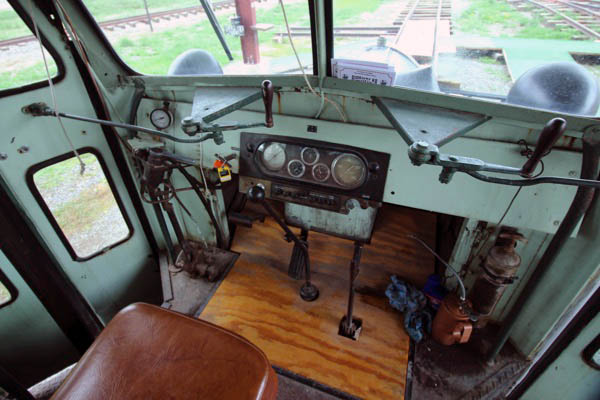
Jul 2023 / RWH
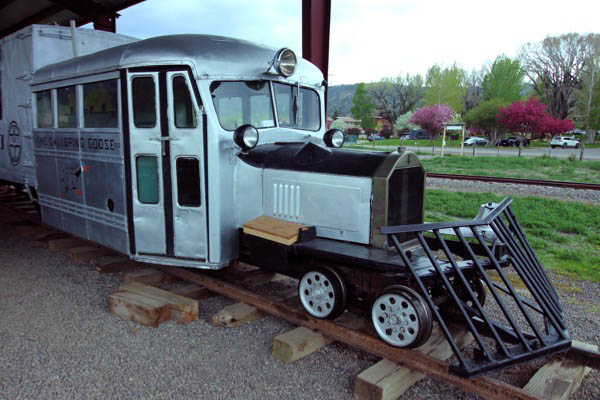
Ridgway, Co / May 2023 / RWH
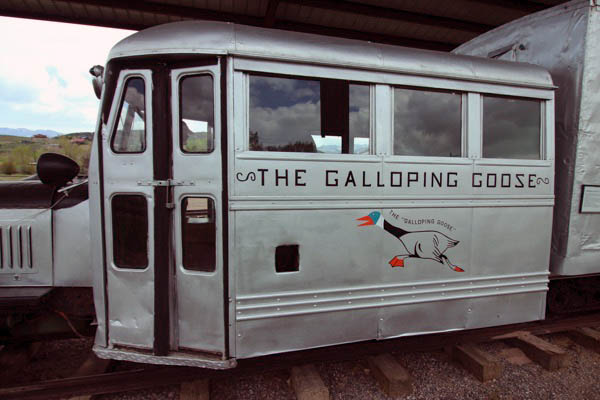
Jul 2023 / RWH
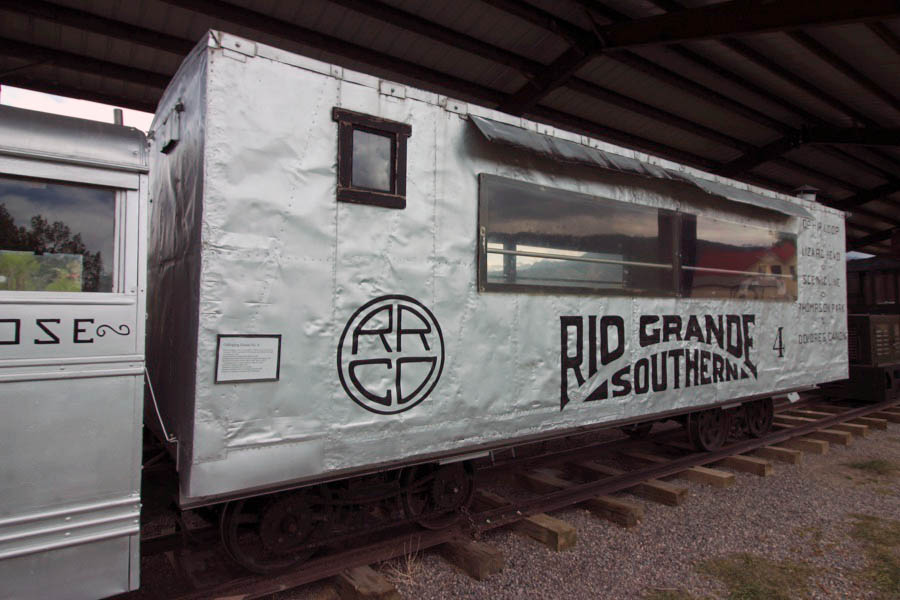
Jul 2023 / RWH
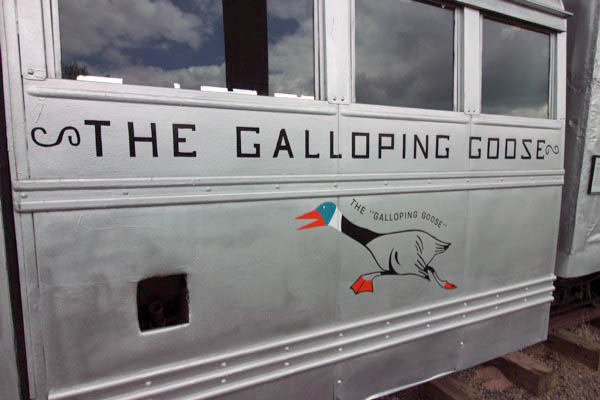

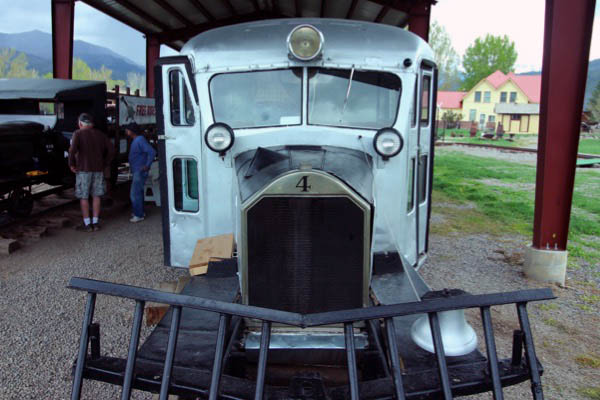
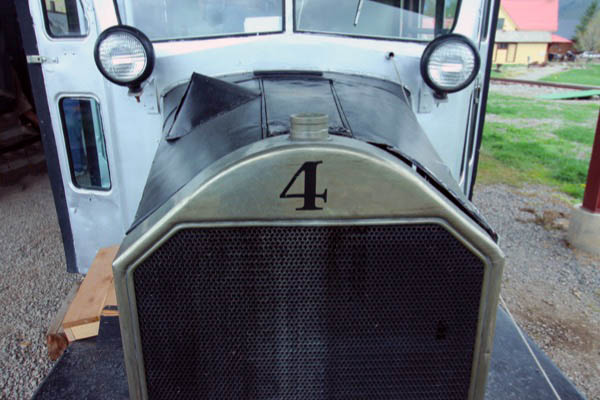

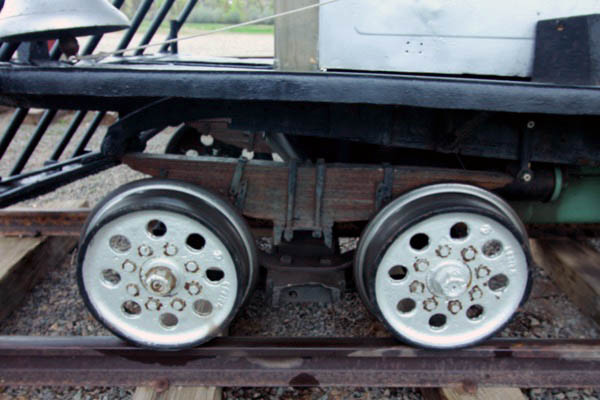


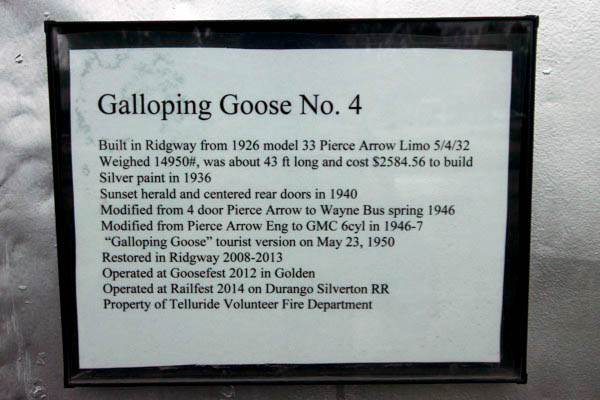

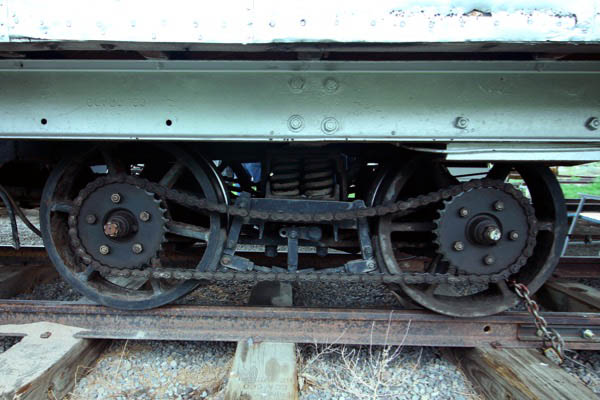
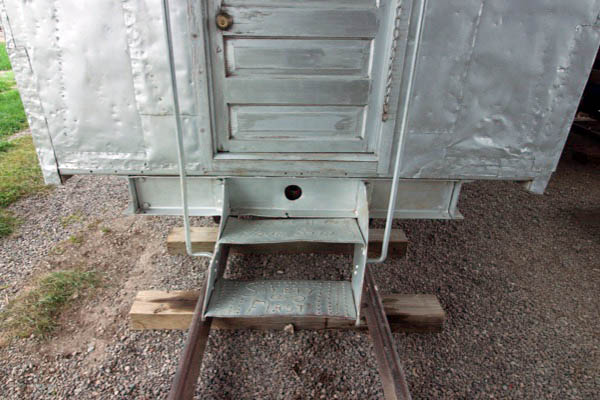
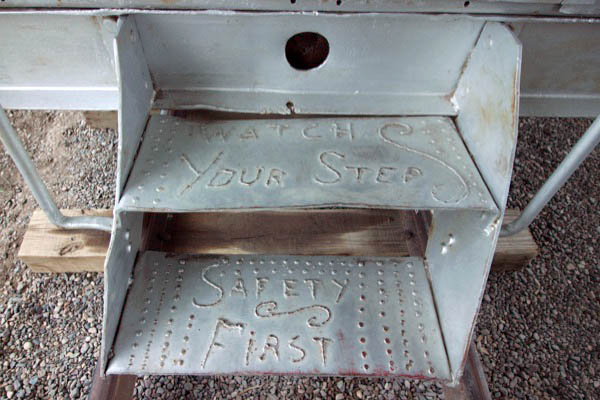
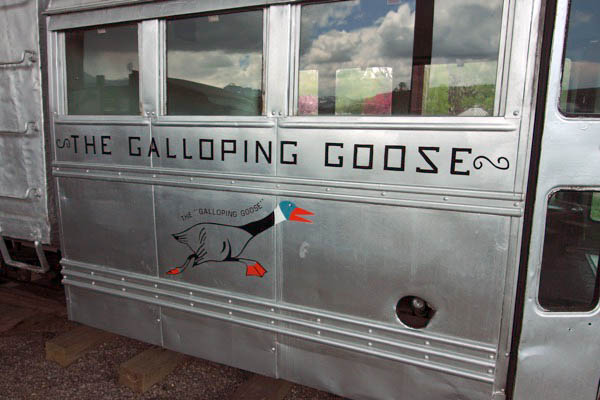
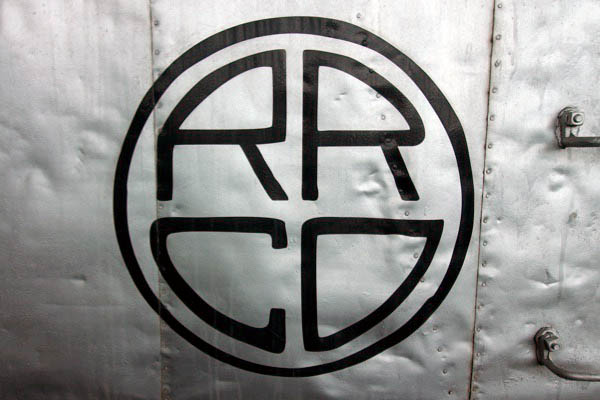
Jul 2023 / RWH
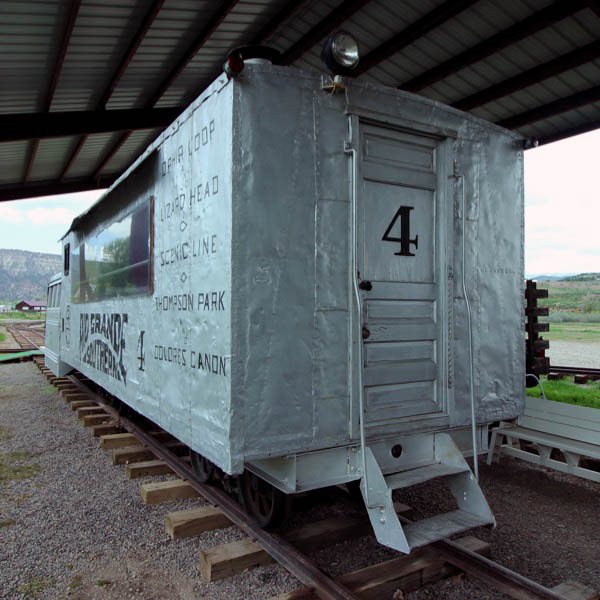
Jul 2023 / RWH
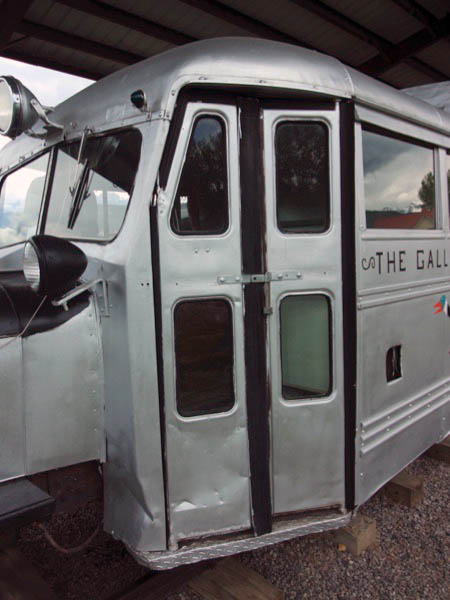
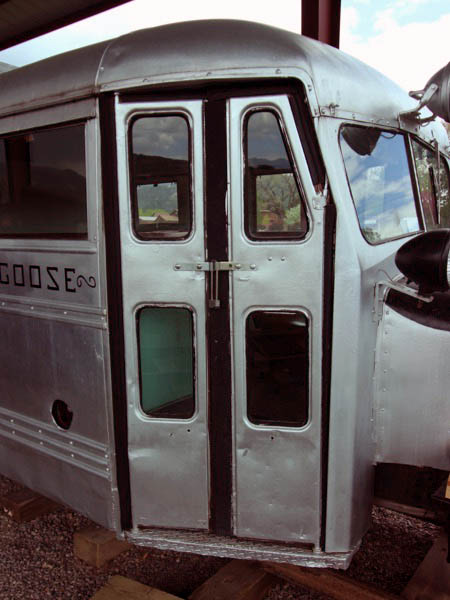
Jul 2023 / RWH
The RGS had the displeasure of experiencing yet another economic downfall, the Great Depression. This was a massive hit on the RGS and affected it to the point where they could not afford to operate one single steam locomotive (paying for fuel, paying the engineer and fireman to operate the locomotive, etc.). However, they still had the responsibility to ship United States mail. That could have been the end of the line for the RGS, but Chief Mechanic Jack Odenbaugh thought otherwise. In 1931 he devised a way to construct seven homemade "railcars" that would be cheap to build and operate, capable of transporting US mail and a few passengers. The official names given from the RGS were "Motors", but these railcars would later be unofficially named "Galloping Geese" by railfans because of how they looked, operated, and sounded — Waddling down the poorly maintained, unlevel RGS tracks with a silver-painted body and hood covers that looked like goose wings when opened up to prevent the motor from over-heating, and the horn sounding somewhat like a honking goose.
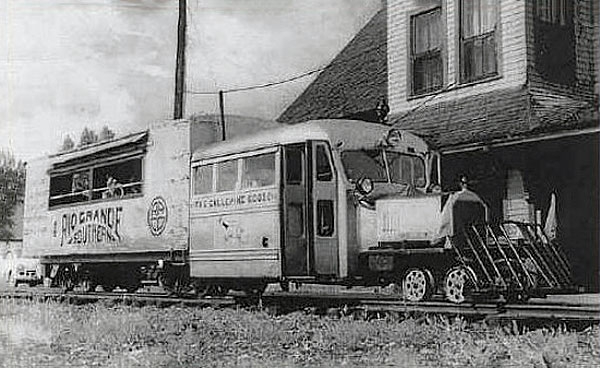 These railcars are arguably one of the most iconic aspects of the RGS and are known by most narrow-gauge railfans. The first Goose (RGS Motor #1) was built from a recycled Buick body, frame, and engine, and #2 would be as well, but with a larger and enclosed freight compartment, a requirement to haul US mail. Motors #3 through #5 and #7 were built from Pierce Arrow bodies, but with freight compartments the size of a boxcar. Motor #6 was made from a Buick as well, but it was designated for Maintenance of Way service, and only had a flatbed attached behind the cab. Later on, Motors #3 through #5 would receive replacement Wayne Buss bodies. These motor cars indeed were successful and handled daily services until 1940 when the RGS could afford to run regular freight trains. Even after that, the Geese completely replaced revenue-generating passenger trains until abandonment; almost all passenger coaches the RGS owned at the time had been put into MOW service since.
These railcars are arguably one of the most iconic aspects of the RGS and are known by most narrow-gauge railfans. The first Goose (RGS Motor #1) was built from a recycled Buick body, frame, and engine, and #2 would be as well, but with a larger and enclosed freight compartment, a requirement to haul US mail. Motors #3 through #5 and #7 were built from Pierce Arrow bodies, but with freight compartments the size of a boxcar. Motor #6 was made from a Buick as well, but it was designated for Maintenance of Way service, and only had a flatbed attached behind the cab. Later on, Motors #3 through #5 would receive replacement Wayne Buss bodies. These motor cars indeed were successful and handled daily services until 1940 when the RGS could afford to run regular freight trains. Even after that, the Geese completely replaced revenue-generating passenger trains until abandonment; almost all passenger coaches the RGS owned at the time had been put into MOW service since.

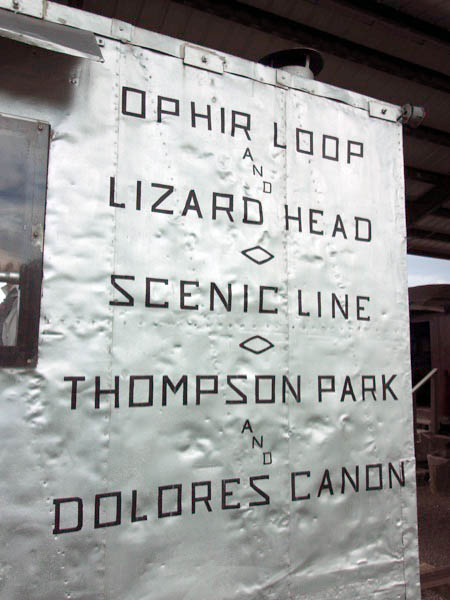
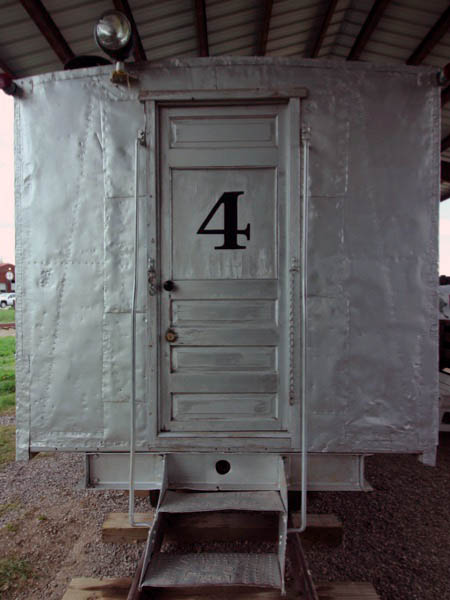

Jul 2023 / RWH
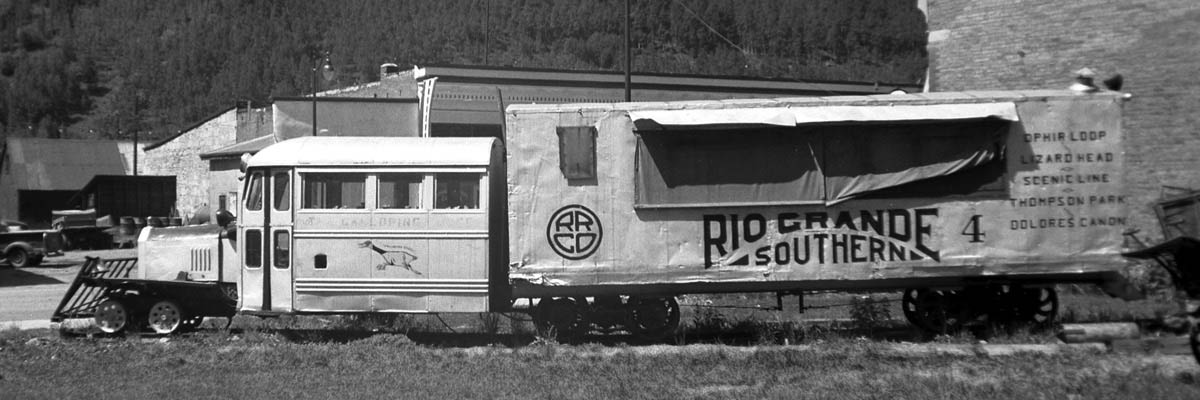
Telluride, Co / Jun 1959 / JCH
 Then and Now
Then and Now
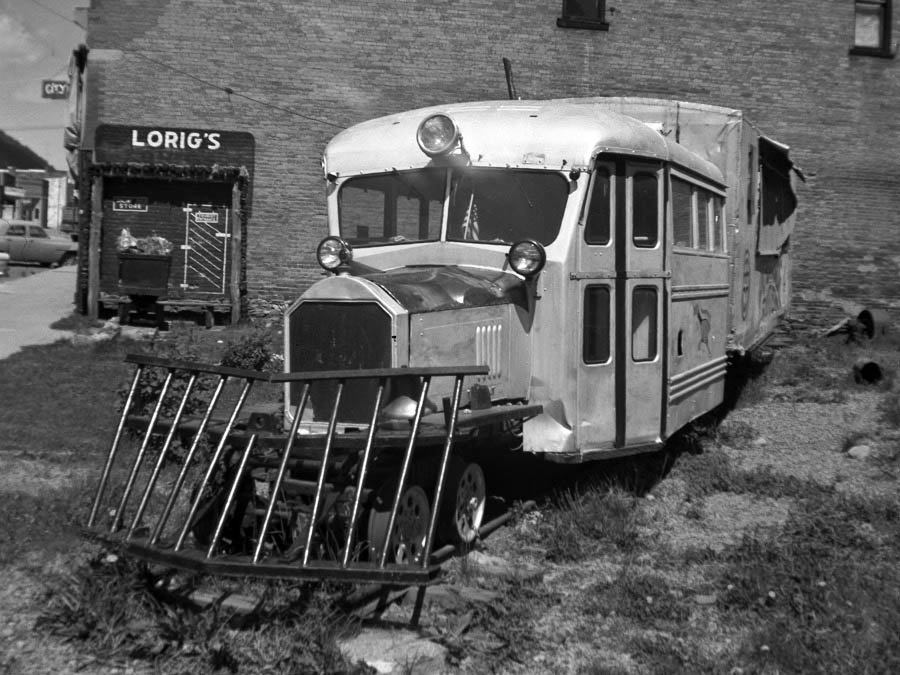
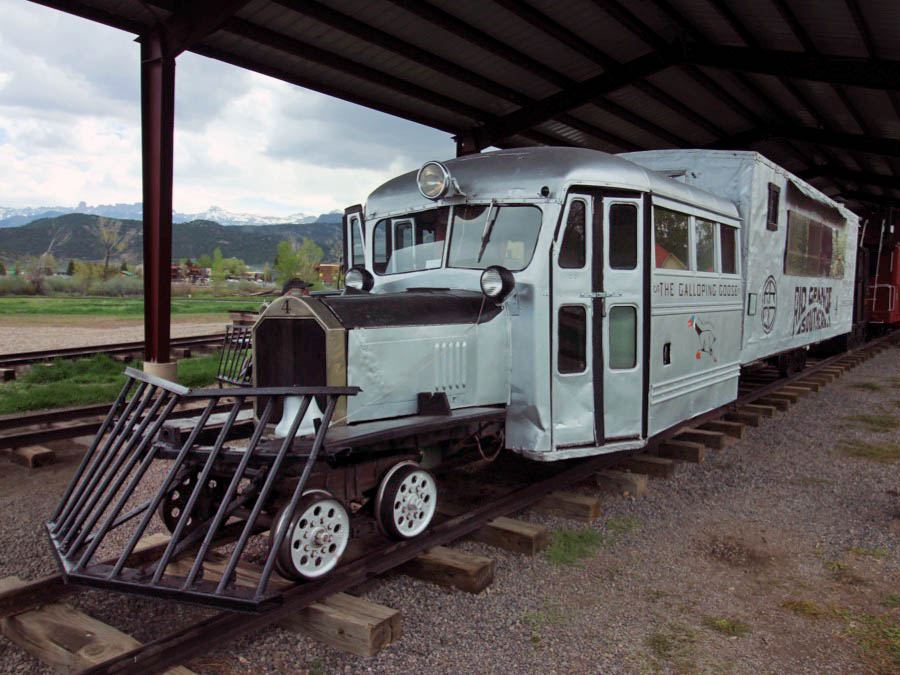
Telluride, Co / Jun 1959 and May 2023 / JCH
Ridgway, Co / May 2023 / RWH>

See also our Rio Grande Southern Galloping Geese featured scrapbook in Shortlines
Rolling Stock

Ridgway, Co / Jun 1959 / JCH

Ridgway, Co / Jun 1959 / JCH
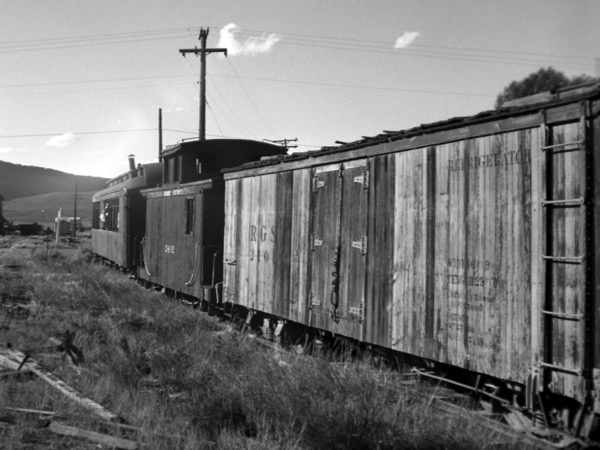
Ridgway, Co / Jun 1959 / JCH
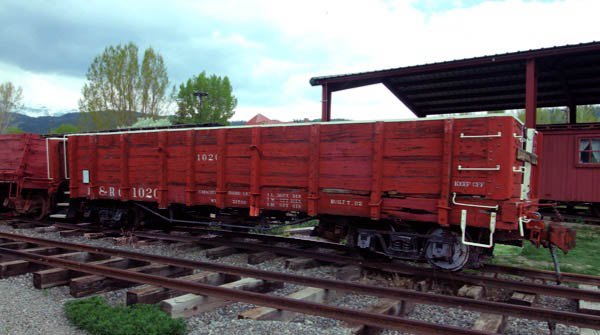
Denver & Rio Grande Western #1020
wooden gondola / Ridgway, Co / May 2023 / RWH

Ridgway, Co / May 2023 / RWH

Denver & Rio Grande Western #3130
wooden boxcar / Ridgway, Co / May 2023 / RWH
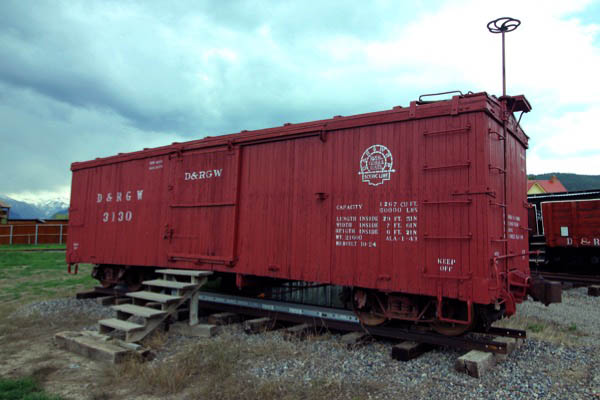
Ridgway, Co / May 2023 / RWH

Ridgway, Co / May 2023 / RWH

Denver & Rio Grande Western #4914
wooden MOW work car / Ridgway, Co / May 2023 / RWH
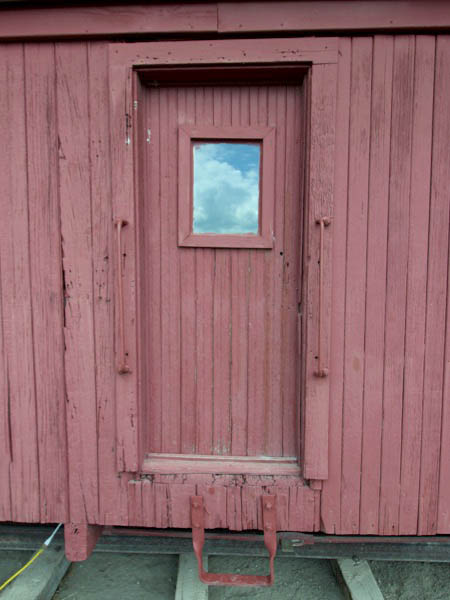
May 2023 / RWH

May 2023 / RWH
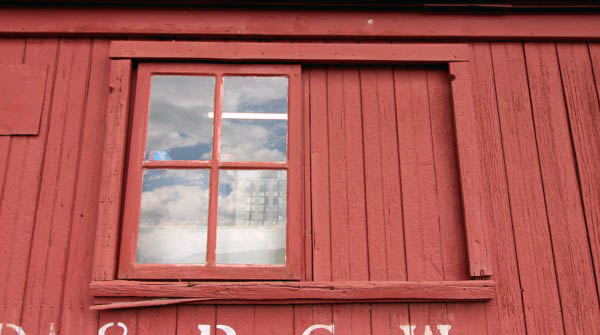
May 2023 / RWH
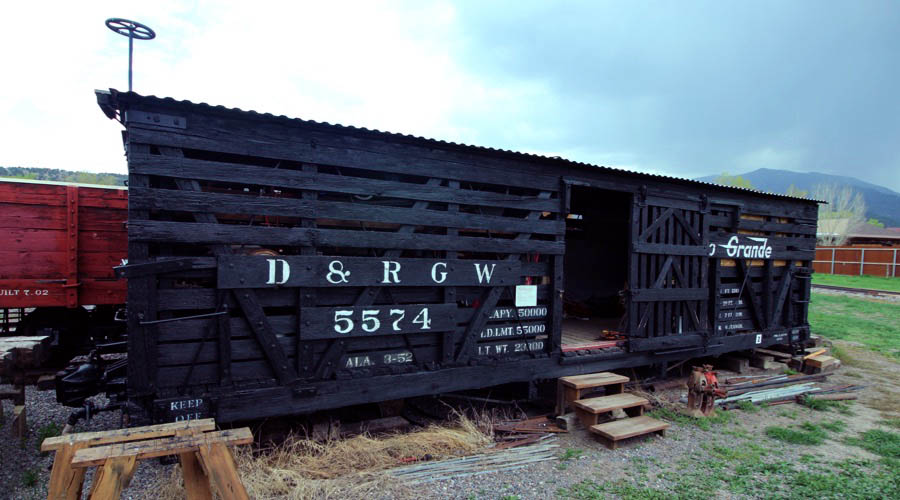
Denver & Rio Grande Western #5574
wooden stock car / Ridgway, Co / May 2023 / RWH
 Coach 252
Coach 252
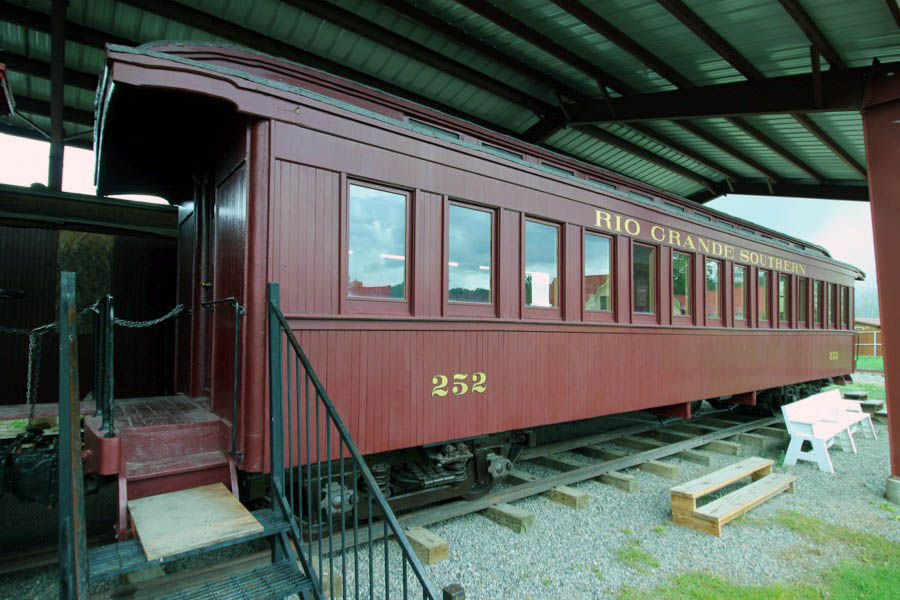
Rio Grande Southern #252
wooden coach (1880) / Ridgway, Co / May 2023 / RWH

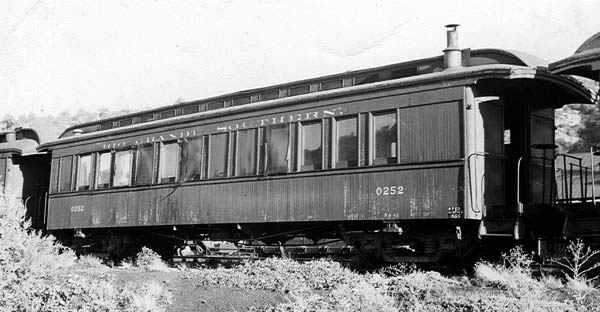
 his car was built by Jackson & Sharp in 1880 as the Denver & Rio Grande ‘Gothic’, then sold to Otto Mears and lettered Rio Grande Southern 252 in 1891. It was used on the daily passenger trains between Ridgway and Durango until the early thirties when the passenger trains were replaced with ‘Motors’. It carried 48 passengers in flip over ‘Buntin’ seats. It had a bathroom and (one later two) coal stoves. It was finished with varnished ash paneling and a white ceiling with kerosene lamps. After the RGS was scrapped it was sold to Bob and Connie Schaeffer for $150. They spent another $300 getting it moved from Dallas Divide to a lot on the south side of Trout Lake. It was the Schaeffer cabin for about 9 years until sold. It was subsequently sold again to Don Shank and moved to Durango about 2000. It was moved to Monte Vista, CO. It was later traded to the Willamette Valley RR in about 2014. The Schaeffer family bought it in 2016, donated it to the RRM, and it was moved to Ridgway in May 2016.
his car was built by Jackson & Sharp in 1880 as the Denver & Rio Grande ‘Gothic’, then sold to Otto Mears and lettered Rio Grande Southern 252 in 1891. It was used on the daily passenger trains between Ridgway and Durango until the early thirties when the passenger trains were replaced with ‘Motors’. It carried 48 passengers in flip over ‘Buntin’ seats. It had a bathroom and (one later two) coal stoves. It was finished with varnished ash paneling and a white ceiling with kerosene lamps. After the RGS was scrapped it was sold to Bob and Connie Schaeffer for $150. They spent another $300 getting it moved from Dallas Divide to a lot on the south side of Trout Lake. It was the Schaeffer cabin for about 9 years until sold. It was subsequently sold again to Don Shank and moved to Durango about 2000. It was moved to Monte Vista, CO. It was later traded to the Willamette Valley RR in about 2014. The Schaeffer family bought it in 2016, donated it to the RRM, and it was moved to Ridgway in May 2016.
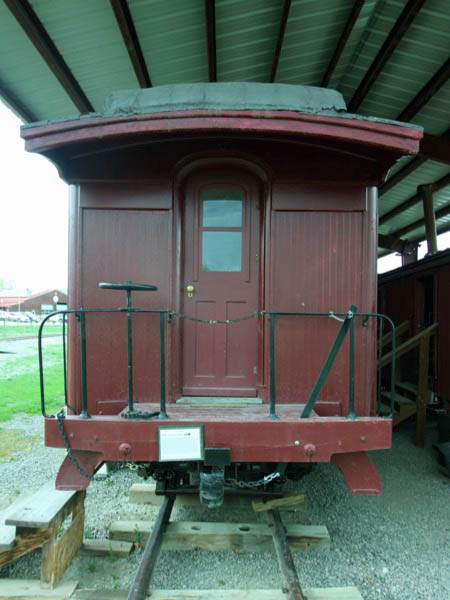
May 2023 / RWH

May 2023 / RWH
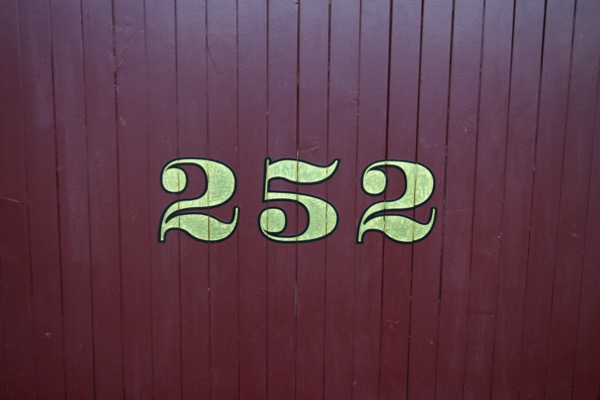
May 2023 / RWH
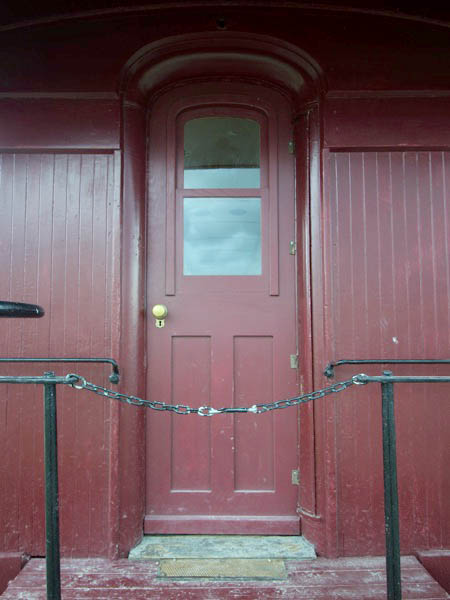
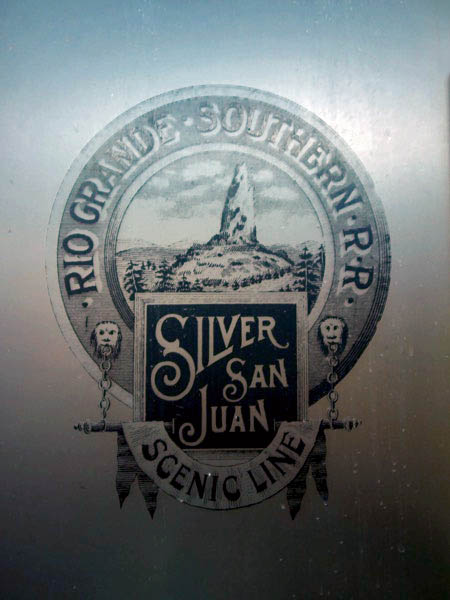
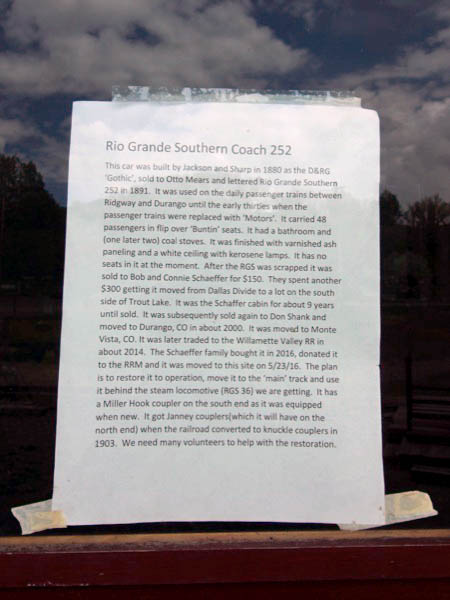
May 2023 / RWH
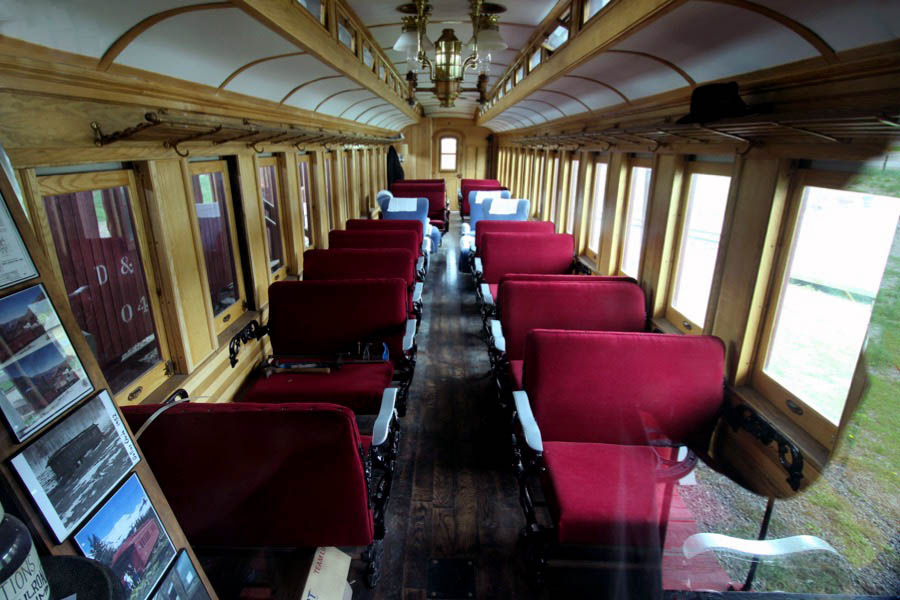
May 2023 / RWH

Ridgway, Co / May 2023 / RWH
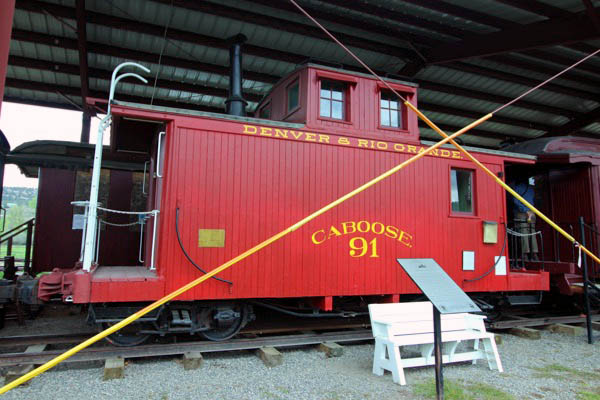
Denver & Rio Grande #91
wooden caboose / Ridgway, Co / May 2023 / RWH
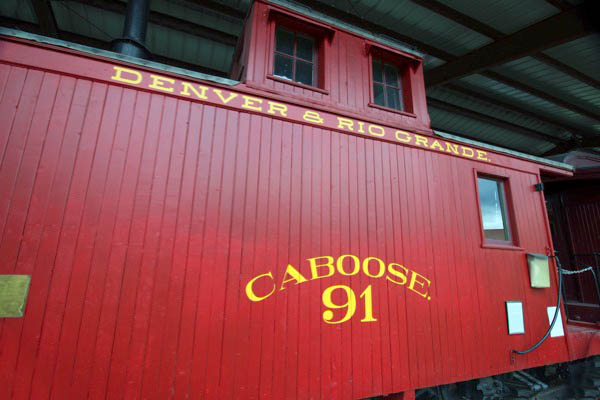
May 2023 / RWH
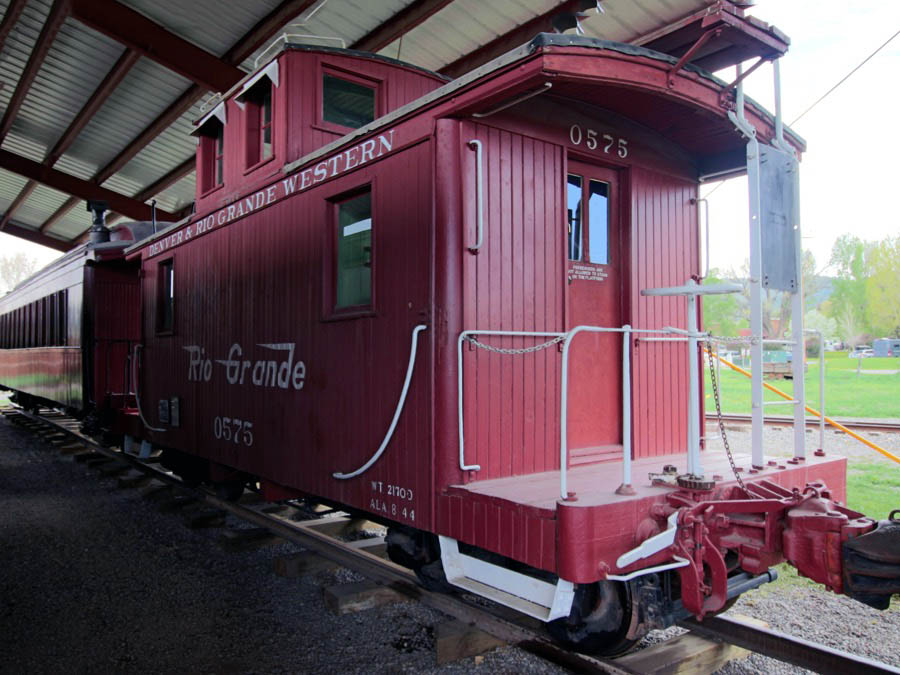
Ridgway, Co / May 2023 / RWH
Equipment
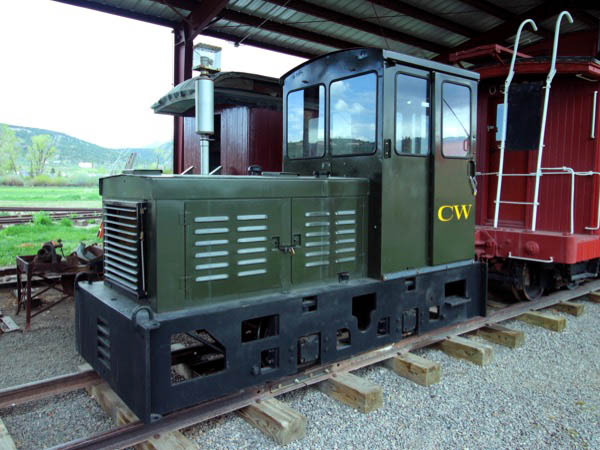
Ridgway Railroad Museum CW
Ridgway, Co / May 2023 / RWH
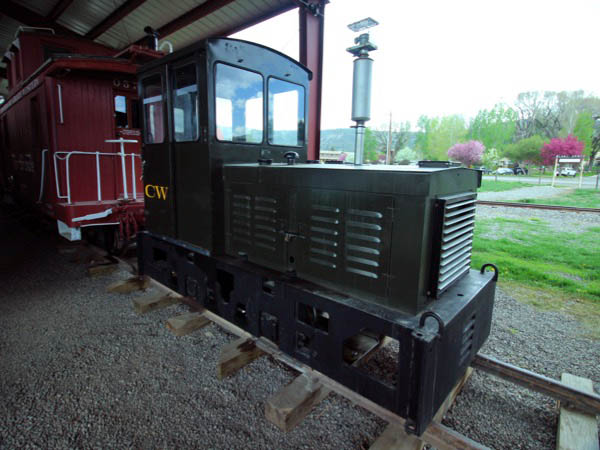
Ridgway, Co / May 2023 / RWH
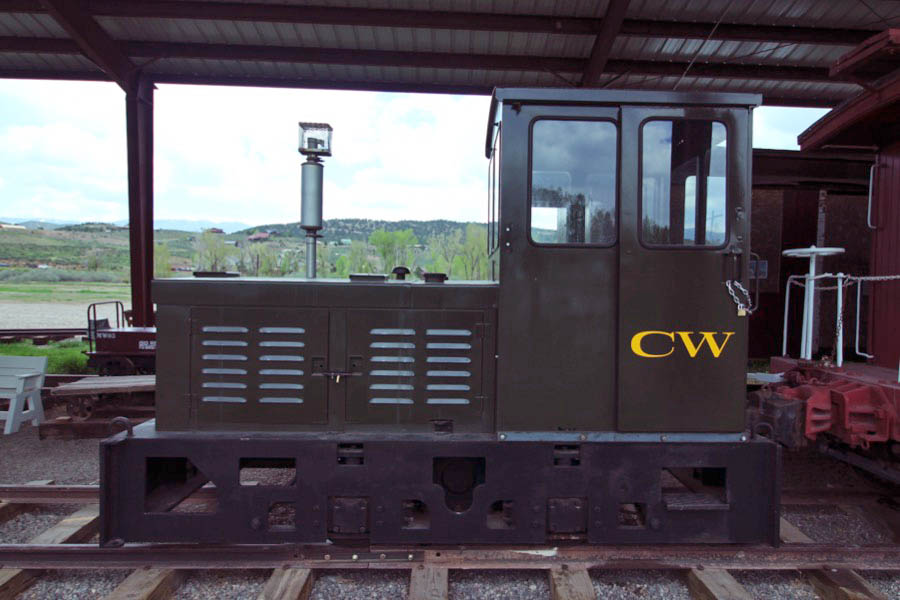
Ridgway, Co / May 2023 / RWH
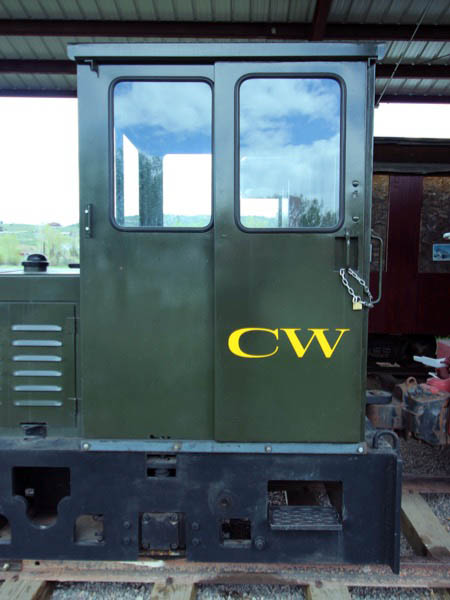
May 2023 / RWH

Ridgway, Co / May 2023 / RWH
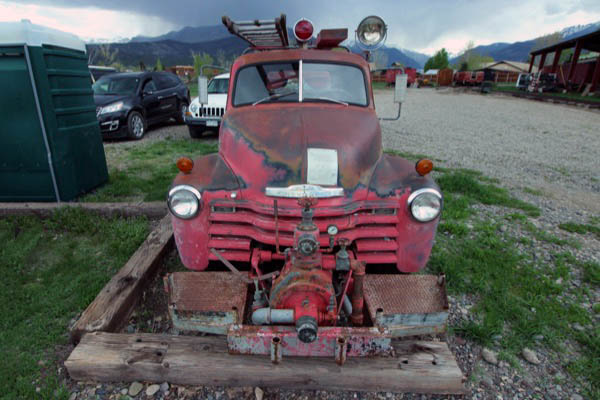
May 2023 / RWH
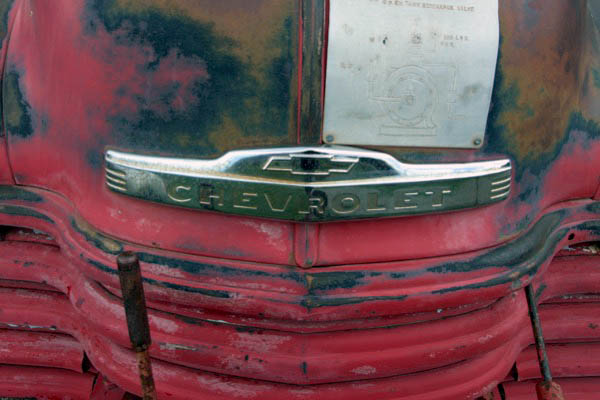
May 2023 / RWH
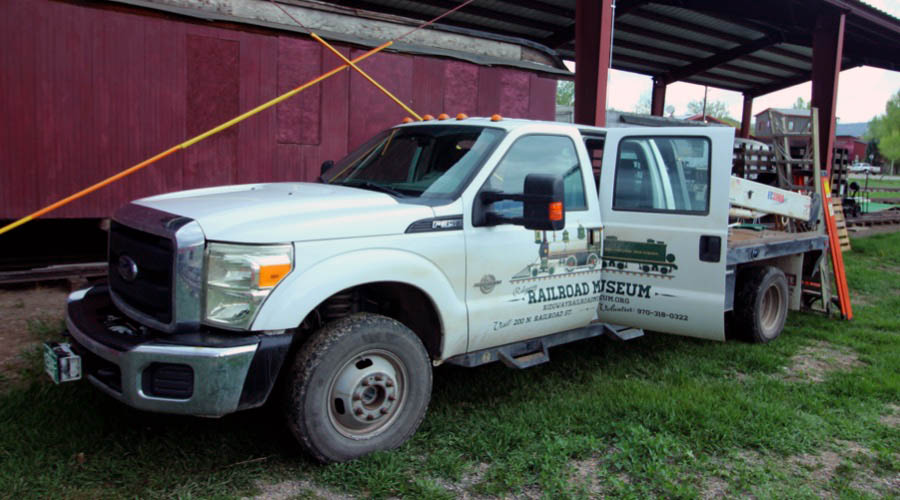
Ridgway, Co / May 2023 / RWH
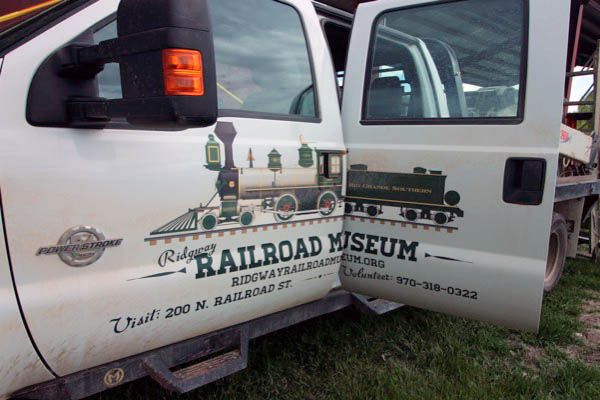
May 2023 / RWH
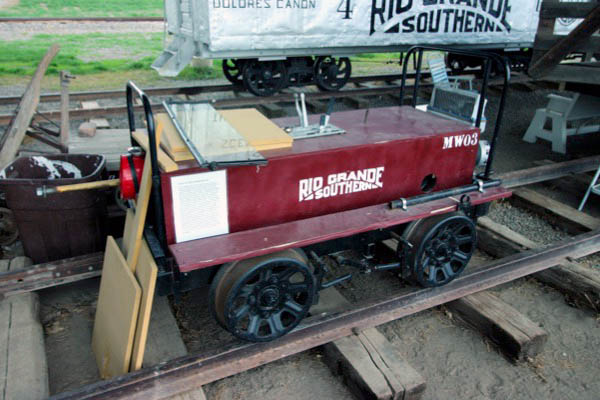
Ridgway, Co / May 2023 / RWH
Lagniappe



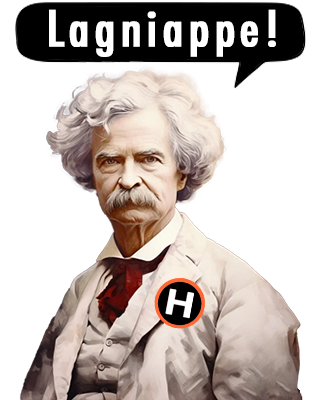

Free Bird Melody
Ridgway, Co / May 2023 / RWH
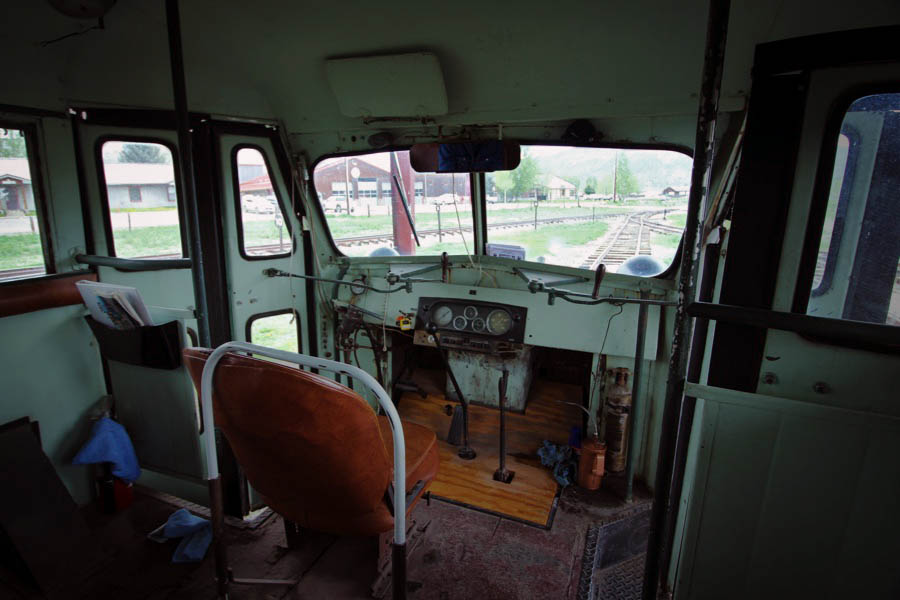
Cost Savings Cockpit
Ridgway, Co / May 2023 / RWH
 Snapshots
Snapshots
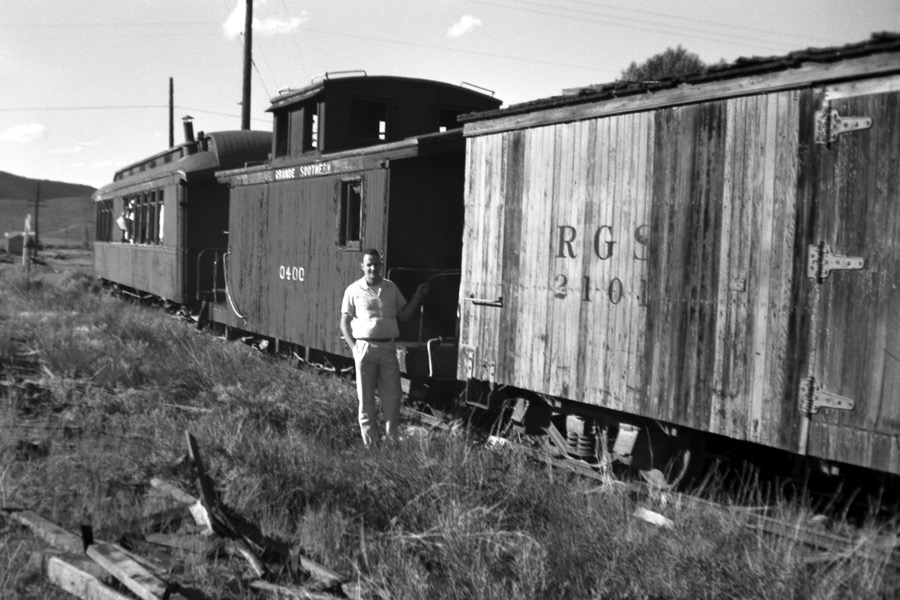
Ridgway, Co / Jun 1959 / Lucile Hawkins
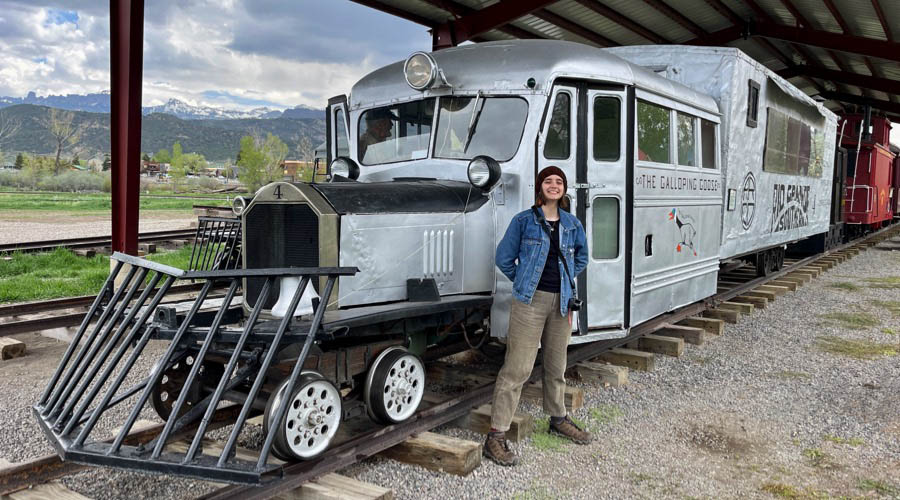
Ridgway, Co / May 2023 / RWH

Ridgway, Co / May 2023 / RWH
Links / Sources
- Ridgway Railroad Museum website
- Galloping Goose Historical Society
- Wikipedia article for Rio Grande Southern Railroad
- Ridgway Area Chamber of Commerce
- Town of Ridgway Colorado website

